Another short video by Apex focused on the SVMC M2. This time we were trackside at Sonoma doing some test and tuning. I currently run their matte black 10.5” wide FL-5 wheels, their stud kit, and spacers in the front. This gives the SVMC M2 a 275 (stretched) square setup which is about all we can fit without body medications given we are also running a KW clubsport suspension and a BBK. Also featured in this video is Sparta Evolution's M2 racing brake kit.
BMW M2 Build - Graphics
I wanted some basic graphics to complete the look but to also show support for those that helped me in this build. Given this is a streetable track car I didn’t want anything too flashy so I kept with the black and white look.
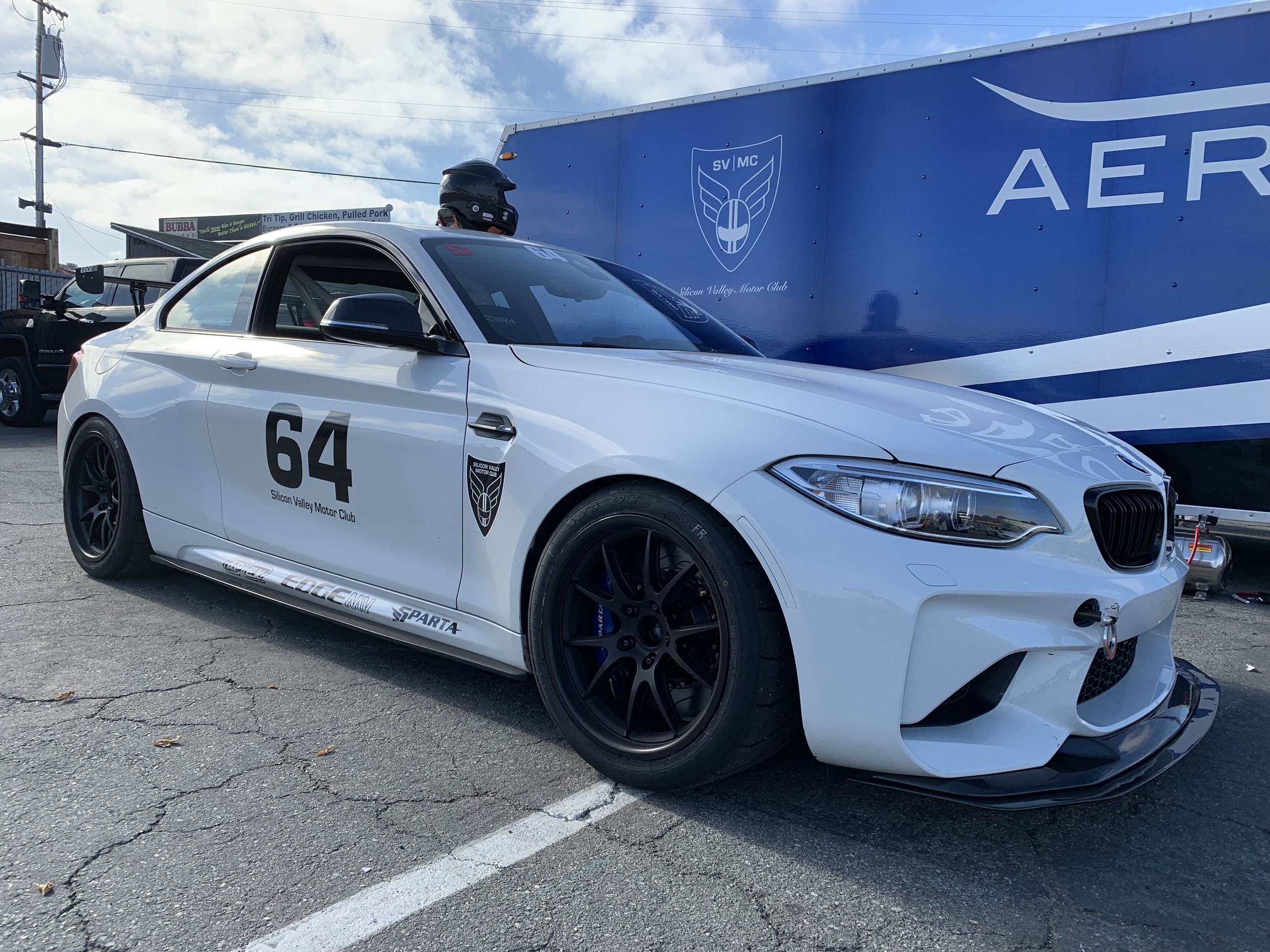
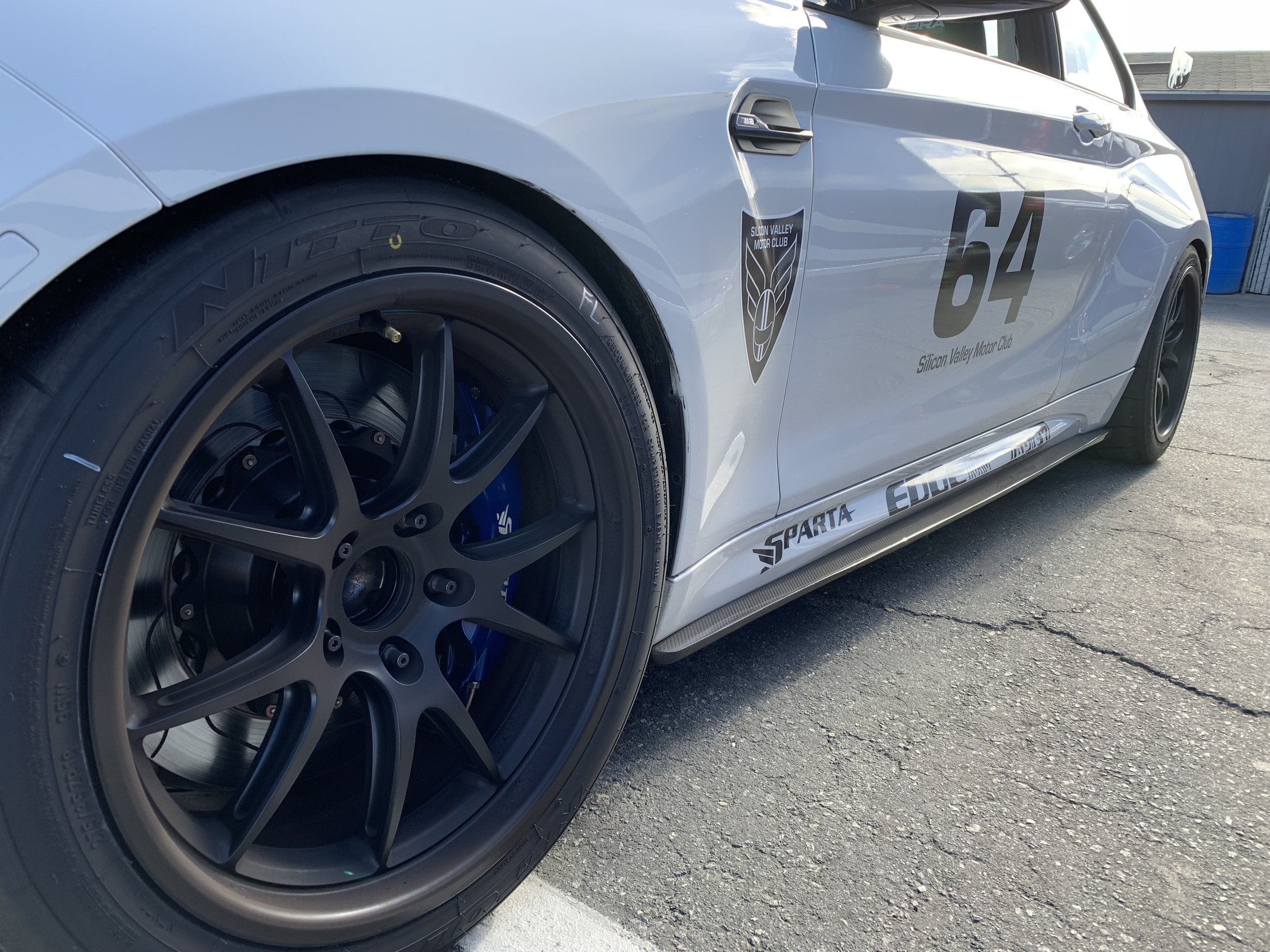

BMW M2 Build - Aero
Keeping with the theme, I wanted to make the SVMC M2 as track oriented as I could, while keeping with the GTS look. So that meant putting on an aero package. I wanted something that was streetable but functional on the track. This is easier said than done as most streetable aero packages do virtually nothing on the track for downforce. To accommodate both street and track I decided I wanted the aero package to be adjustable as much as possible so I could dial up or down the amount of downforce depending on the application. Most importantly, I wanted to make the aero package BALANCED.
You can't just slap a wing on the back but do nothing to the front. You also can't put on a nice looking large front splitter but leave the rear untouched. Doing one end of the car without balancing the downforce effects to the other end of the car might upset the car's grip profile to the point that you are doing more harm to your lap times than good. So I had to find a package where the design of the parts were meant to work together.
That landed me with a front adjustable splitter that was modeled off of the M4 GTS and an adjustable racing wing modeled off of the M235ir factory race car. There are a few companies making these types of aero package but in the end I went with RW Carbon out of SoCal. They make affordable, nice looking, practical parts that accomplish what I was looking for. I was pleased with the carbon fiber weave pattern and the fit of the parts to the M2 body. I did have to upgrade all of the hardware that came with the parts to ensure the parts could stand up to some abuse on the track. This meant replacing screws with bolts and adding more 3M tape in some places. Also you will need to fabricate some support plates for the racing wing otherwise you risk bending your truck over time. For this I had Edge Motorworks do the fabrication.
The front adjustable splitter was time consuming to install as you need to remove the bumper, but it was a rather simple process. The splitter has three pieces: a support piece, the main splitter, and the adjustable plate. What is nice about this design is that it is modeled right after the M4 GTS but scaled down to fit the M2, and thus follows the lines of the car perfectly. It also allows for a couple inches of adjustability or you can quickly and easily remove the bottom plate to make it more streetable. It also has some air ducts in the splitter that you could fabricate a mounting plate and hose to route to the front brakes if you wanted to. This might be something I do over the winter. Since I had to remove the bumper to install the splitter I took the opportunity to also install a front camera system so that when I park I can avoid smashing the carbon fiber splitter into parking curbs. The front camera also makes loading and unloading the car in the trailer easy.











One thing I really liked about RW Carbon's racing wing was that you could order it with low towers or high towers as well as with racing end plates or GTS end plates. With these options plus the fact the wing has some angle adjustability you end up with lots of choices and options to find tune the setup. I bought both end plate and tower styles, but my go to setup will be the racing end plates with the high towers.
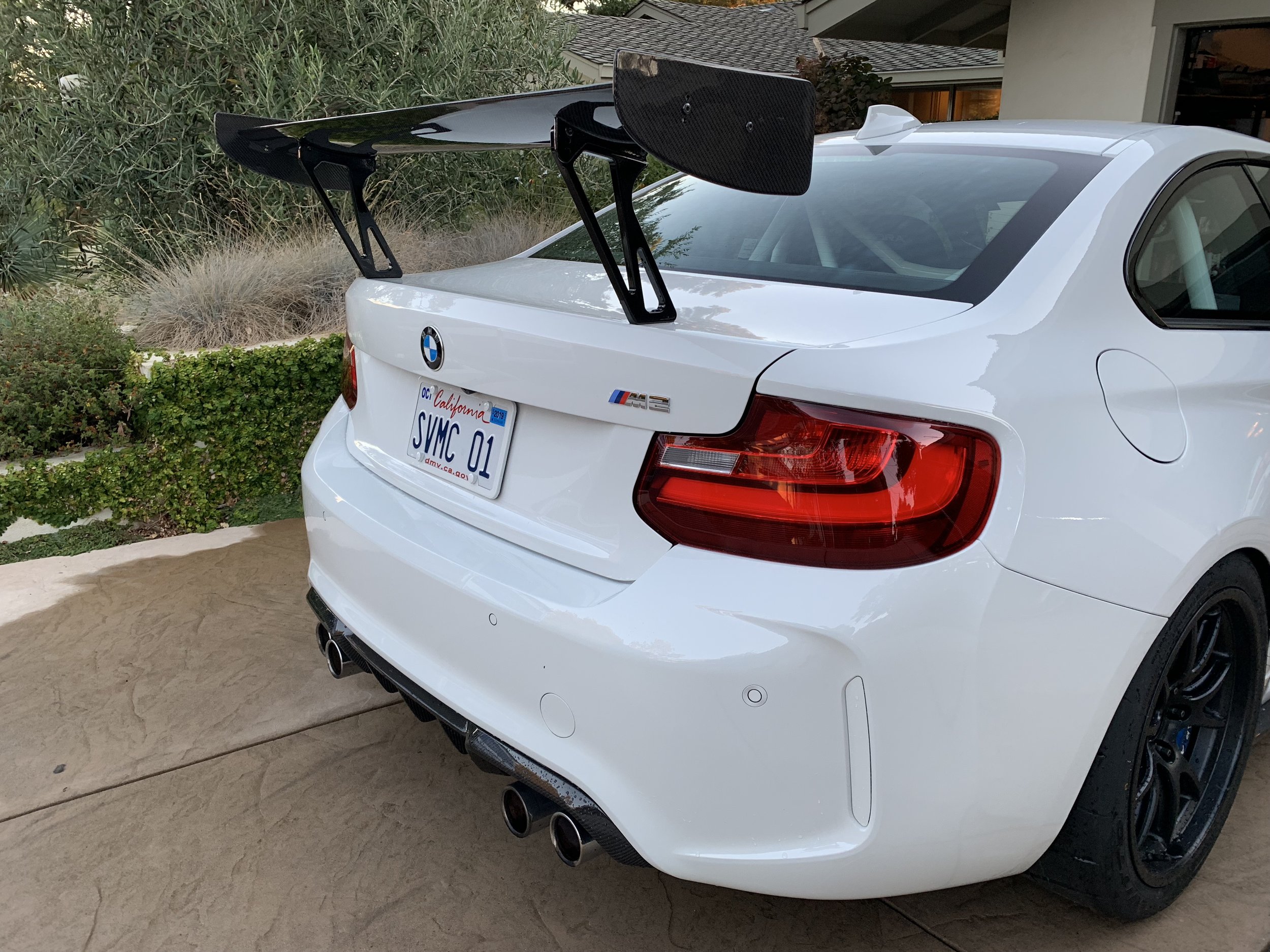
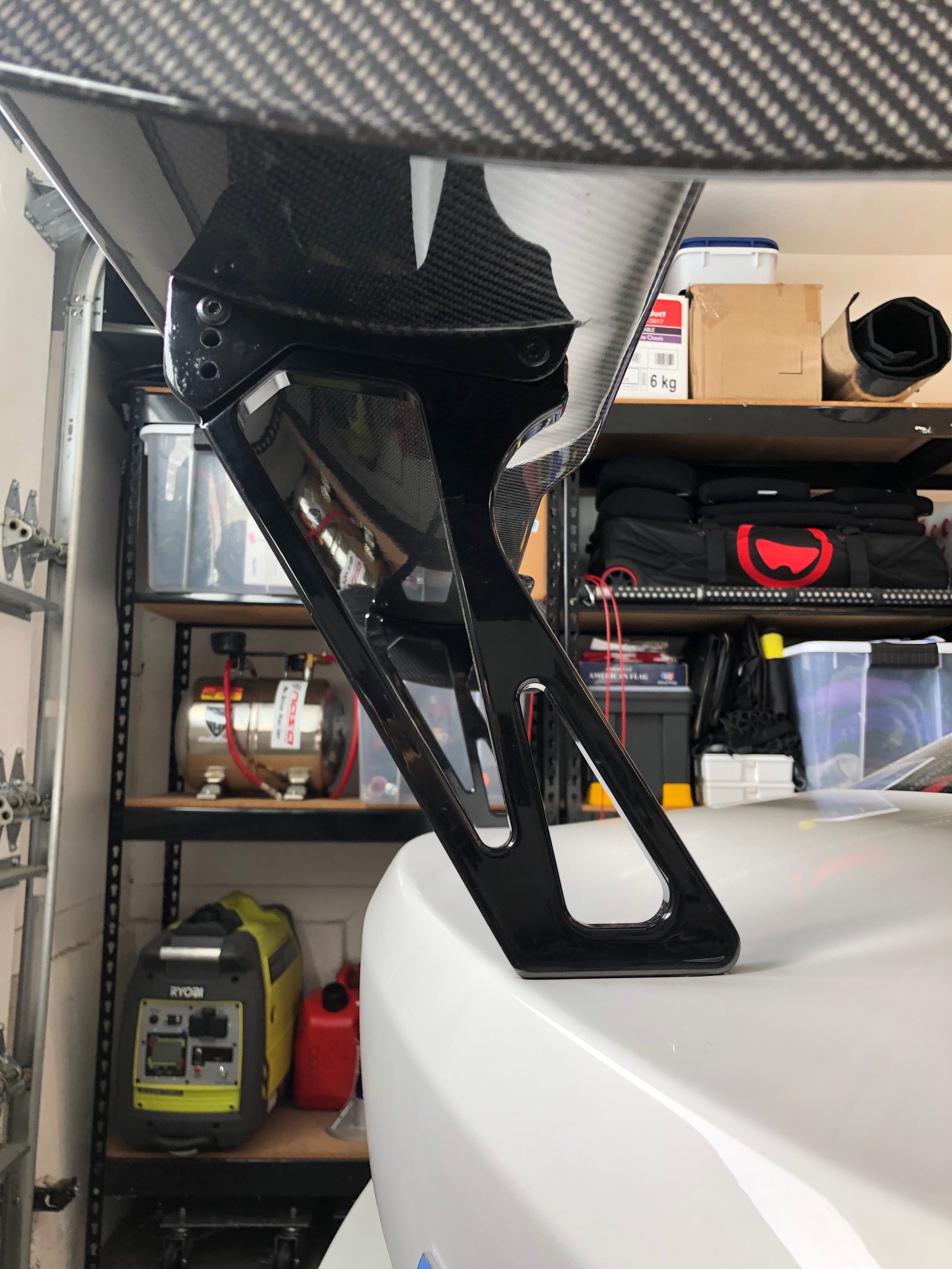
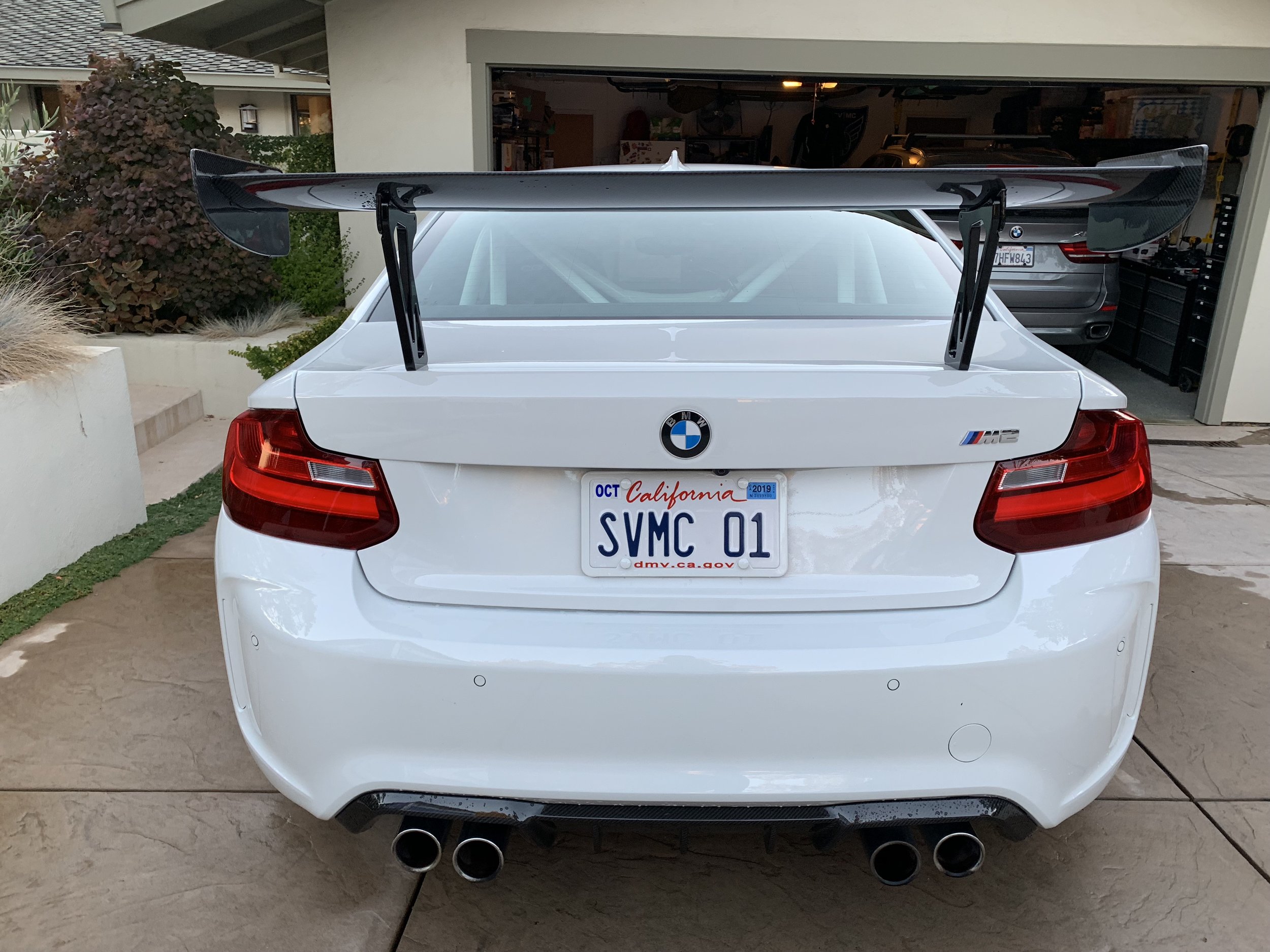

Lastly I did install some side skirts from RW Carbon which does not add any downforce or performance to the car, but does help tie the look of the various parts together.


Overall I am thrilled with the RW Carbon aero package I pieced together. There are other aftermarket options, and some OEM options, but for the price and function you can't beat RW Carbon. You might notice some quality differences here and there and you might need to beef up the mounting hardware but for the price RW Carbon is hard to beat.
SVMC M2 video by Apex
Apex, who makes street and racing wheels with specific fitment for various cars, was kind enough to share the video they shot that featured the SVMC M2. I have run Apex on a few different cars with great success so they were the obvious choice when building out the SVMC M2. I currently run their matte black 18x9.5 ET28 FL-5 wheels and their stud kit. If you want to learn more about my wheel and tire setup for the SVMC M2 go here. Thanks again Apex for featuring the SVMC M2 in your promotional video. Also featured in this video is Sparta Evolution's M2 big brake kit.
BMW M2 Build - Racing Seats
Virtually any street car (no matter how expensive) is likely to have subpar seating for the track. I have driven some of the nicest street cars you can buy (Ferrari, Lamborghini, Porsche, McLaren, and others) and all had subpar seats for the track. Don't get me wrong, these cars have great seats just not ideal seats for the track. Most sports cars don't have enough lateral support, no or poorly placed harness passthrough holes, and their seats usually weight 50lb+. The M2 was no exception. While the seats where great for the street with nice materials, comfort, and design....they were not up for track duty.
I decided I wanted proper racing seats but I wanted them to be streetable. Many race seats have so much lateral support it is a challenge to get in and out of them. Also many have a halo design which is safer on the track but tends to cause visibility issues and are in fact not street legal. So that meant I needed to find proper racing seats that had the safety and support I wanted for the track but that were street legal and manageable enough for ingress and egress.
With that as the decision criteria I looked at all the usual suspects (Recaro, Sparco, OMP, Momo, Racetech, Sabelt) and while all of these are excellent seats none really fit my criteria. They were either too street focused or so track focused that they were not practical for the street. Some companies had the right type of seat but I did not fit them very well due to the width of the bucket or the height of the harness passthroughs.
I then checked out Cobra and found what I was looking for. Cobra is a UK based seat company that has the full spectrum of seats from vintage, to street, to extreme racing. One of their more popular designs is the SUZUKA PRO and for a period of time that was my first choice as I fit great in it....but the lateral support was so extreme for a dual purpose car it wasn't practical enough for my application. I then talked to Cobra and learned that the IMOLA PRO was very similar to their Suzuka Pro in design, but the Imola Pro had slightly less lateral support that resulted in better ingress and egress for the street while still giving enough support for the track.



Another advantage to Cobra seats is that many of their seats come in two different widths and many also offer their Pro-Fit system. The Pro-Fit system is where they offer multiple thicknesses of the back, bottom, and leg support pads. So between having two widths to choose from and three thicknesses of pads you have 36 different options to get a near custom fit.
I then had to decide what mounting hardware I was going to use to fit the Cobra Imola Pro seats into the factor mounting points of the M2. I ended up going with a company I have used in the past, VAC Motorsports. They have custom rails for the M2 that give dozens of options on where you mount the seats in order to get the perfect position. They also offer accessories for the rails such as sliders, a fire extinguisher mount, 3 point seat belt mounts, harness mounting points, and even a sub strap mounting bar. Because this was a dual purpose car I opted to have both 3 point (for the street) and 6 point (for the track). I also wanted the seats to be on sliders so that a variety of drivers and passengers could be comfortable. Finally I wanted the first extinguisher mount as some of the organizations I run with have that as a requirement. I called VAC and they were able to pull together a package for me that gave me all the options I needed.
As for the 6 point harnesses, I again went with a company I have used before. Schroth Racing is a trusted name in motorsports and I have still not found any harness I like better. I went with their Flexi 2x2 6 point. It is great with a Hans device, comfortable, and easy to adjust.
A word of caution to those that are going to do something similar to a modern car. Keep in mind that once you remove factor seats you will throw a ton of error codes and your dash will light up like a Christmas tree. By removing the factory seats I had warning messages for airbags, seat belts, seat heaters, position memory, and passenger sensing. All of those needed to be coded out which I did by working with CodeMyCar.
With all that done I still had two decisions to make. 1) What do I do with my factory M2 seats? and 2) Do I stay with the theme of a factory GTS style build and thus reupholstery the race seats to match OEM materials? As you can see below I was able to fab up a mounting plate and convert my M2 seats into office chairs, which are surprisingly comfortable. For question #2, I figured that if you go this far you might as well go all the way. So I am currently working with a custom upholstery shop to make the race seats match OEM materials of leather, Alcantara, and polar blue stitching. More on that in a future blog post around the custom interior - which might have been the hardest part of this whole project.
BMW M2 Build - Racing Steering Wheel with Display
Sometimes you do a mod to get better performance. Sometimes you do a mod to achieve a certain look. Other times you do a mod just because you know you will like it. That is why I added the BMW M Performance racing steering wheel with built in display. It just makes driving the car more fun and interactive.
The steering wheel is wrapped in black Alcantara and finished with a matte carbon fiber trim. The buttons, paddles, and airbag all come from your original steering wheel. There are two buttons (one on the left and one on the right) for your thumbs to toggle between the functions of the display. The center display has useful information such as oil and water temp as well as not so useful information like a lap timer. While the lap timer and other monitoring functions work well, any respectful track driver would use a real data logger. There are also shift lights to the left and right of the center display. This might be the most useful (and fun) part of the steering wheel. You can set the RPM threshold of the shift lights rather easily in the settings of the steering wheel.
I have taken the SVMC M2 onto the track a few times since this mod and while it doesn't make you faster it certainly put a smile on my face lap after lap.
BMW M2 Build - Racing Suspension & Brakes
No track car is complete without a proper suspension system. The M2 (F87) comes with a great street focused suspension that is comfortable on the track. Many of the components come directly from the M4/M3, and if the car is only going to see light track use the stock setup is likely good enough. After spending a couple days with the car on the track I decided I wanted a more track/race specific suspension system. The main things I wanted to change over the stock setup is that I wanted to put in more negative camber, I wanted a lower and tighter ride, and I wanted adjustability to accommodate different tracks and different setups.
To accomplish this I choose KW Suspensions 3 Way Clubsport coilover kit and their adjustable camber plates. I also upgraded the rear camber arm bearing with Bimmerworld's M4 kit and the front upper control arm bearing with Bimmerworld's M4 kit. This will take out some of the snappiness when quickly unloading the suspension. I decided to keep the sway bars and control arms all stock for now, but after we get some more track testing done we will decide if any further medications are needed.
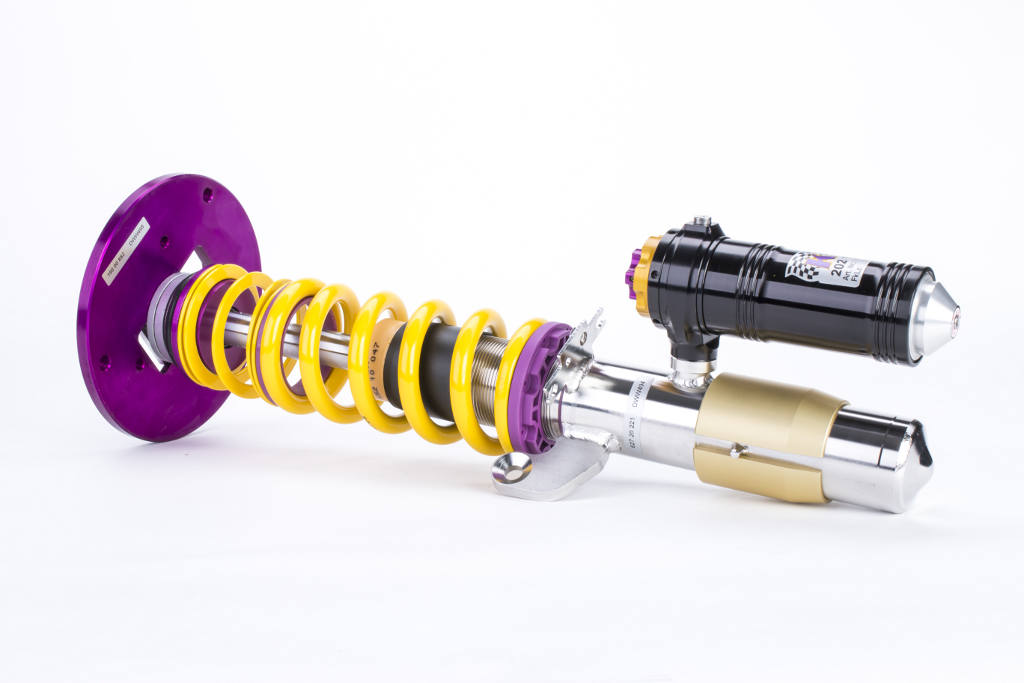
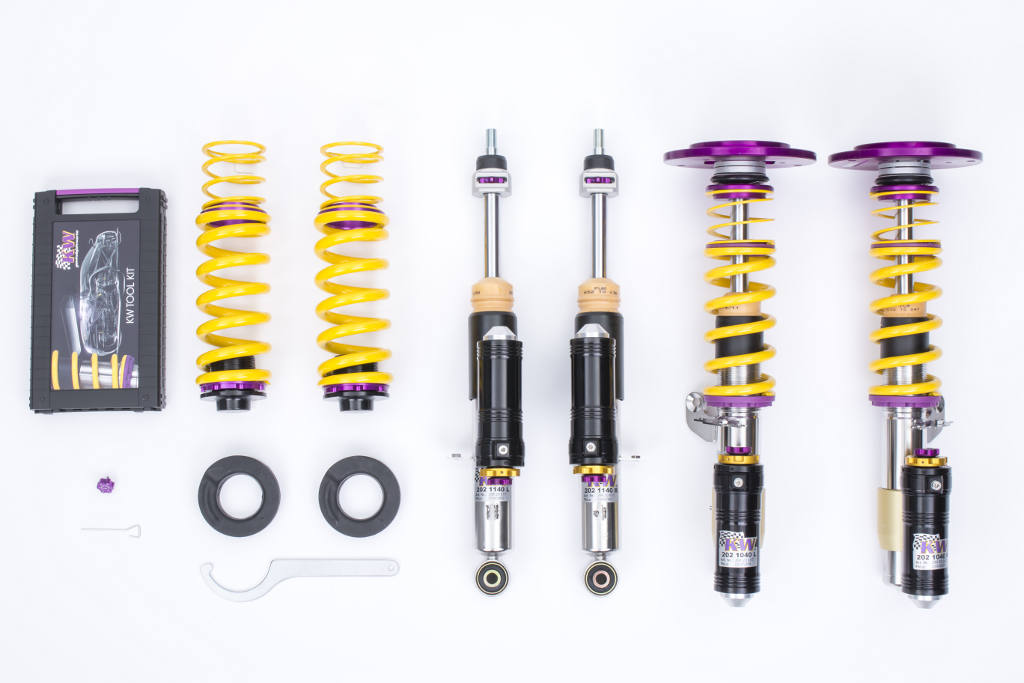
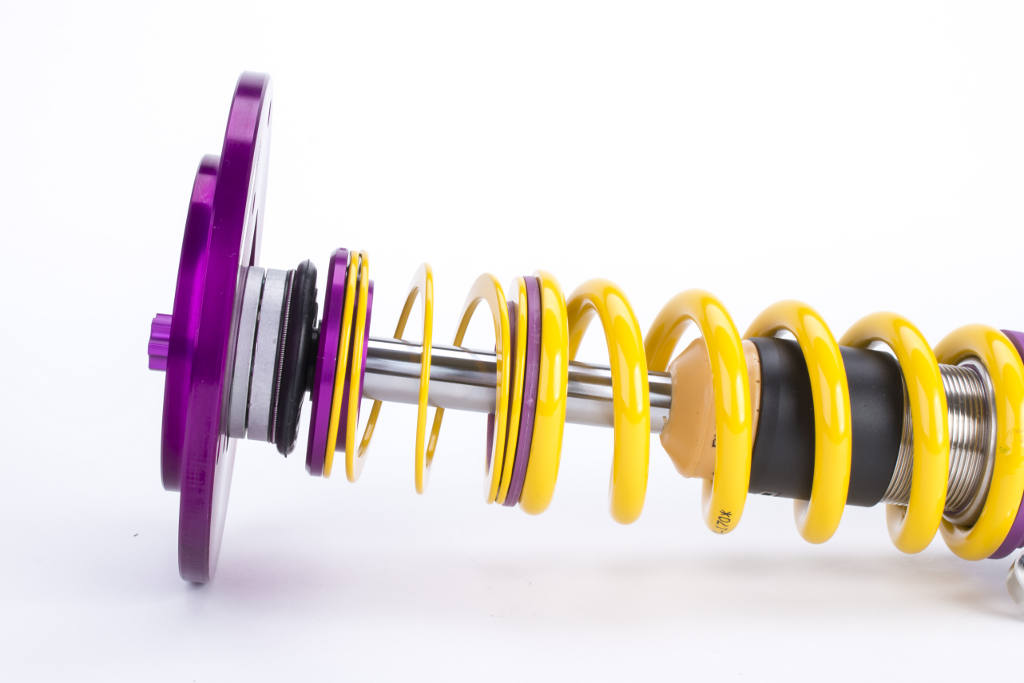
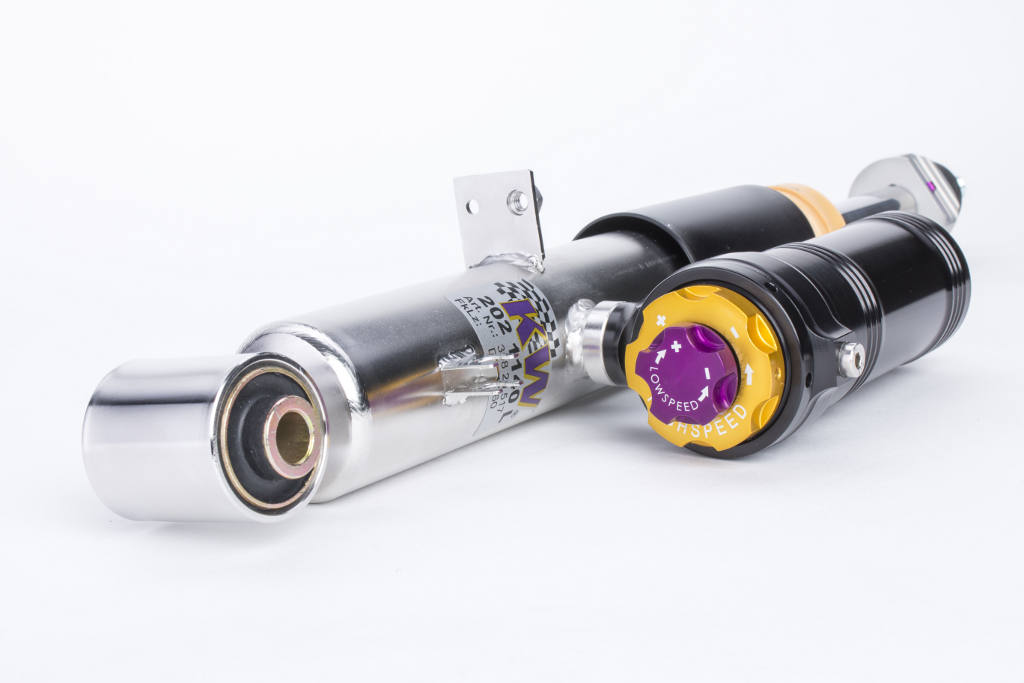
Like the suspension, the M2 stock brakes are good for street and light track duty but not up for the task of heavy track use. I had already upgraded the pads and fluid but found the brakes still needed more stopping power. Instead of going with Brembo or StopTech or AP I decided to go with Sparta Evolution out of Washington. They have fantastic track and race kits at a reasonable price that should be considered before simply going with the bigger brands.
Their calipers are forged in aluminum, come powder coated or anodized, have quick release pad retainer pins, and there are a ton of pad options to choose from. For the M2 we were able to upgrade to Sparta Triton 6 piston in the front and 4 in the back (stock is 4 and 2). I went with their 3.0 pads which are designed for heavy track use but manageable for the street. They have less and more extreme pad options as well. For rotors I went with Sparta's Pegasus two piece floating hat rotors with an S-slot pattern. They are 380mm front and back (just a bit bigger than stock). This should be a huge improvement over the stock setup. There is a chance we will still need some brake air ducts which we can fabricate if needed.



Edge Motorworks of Mountain View helped me select the suspension and brake systems as well as doing all the install and adjustments. Edge also did a corner balance and track focused alignment. We did find we needed a 5mm spacer (3mm might be enough) in the front to properly clear the wheels. Now its time to test it out on the track and fine tune the setup to optimize the performance.
BMW M2 Build - Custom Cage
I, like many others, started my track experience in a stock street car but it wasn't long before I realized just how important safety gear is. In my opinion you can't spend too much money on safety gear. I knew I wanted a cage added to the M2 and while a full cage would have been safer it would have limited the SVMC M2 to the track as it would no longer be street legal. Because this build had to be street legal, I went with a half cage. But not just any half cage, an extremely custom and over-engineered half cage by TC Design.
I could have gone for an off the shelf half cage and pre-fabricated rear seat delete panels. I could have gone with the high end options from BMW Moto GP, RKG, or Fall Line. But when you look at all of these options you will notice some design compromises that seem to be a little less safe. All of the cages I looked at were built to some spec (NASA or SCCA usually) and certainly are better than no cage, but they seem to have sub par mounting points or had the horizontal bar at the wrong height or used a simplistic design that sacrificed strength. I have no doubt they are all "good" cages but I wanted the best possible half cage.
That is what led me to TC Design who I commissioned to design and fabricate the cage and rear panels. TC Design took inspiration from the BMW M4 GTS cage but made design improvements on how and where the cage mounted to the chassis as well as changing the design of the horizontal bar. The gusseted main hoop cross showcases Tony's welding skills, increases the strength of our design over the M4 GTS, and puts the horizontal bar in a better position for the racing seats and 6 point harness. We then topped it off by powder coating the cage in white to match the car.




Tony then moved onto designing and fabricating the panels which are a work of art. He was able to bend and cut the panels to fit perfect and give it an OEM look. The panels are removable as needed and were powder coated in black for durability. It is almost a shame that these panels will be upholstered in OEM Alcantara and Polar Blue stitching to match the factory interior. Be on the lookout for a future blog posting focused on the upholstery which has been one of the most difficult parts of the build to source and plan.
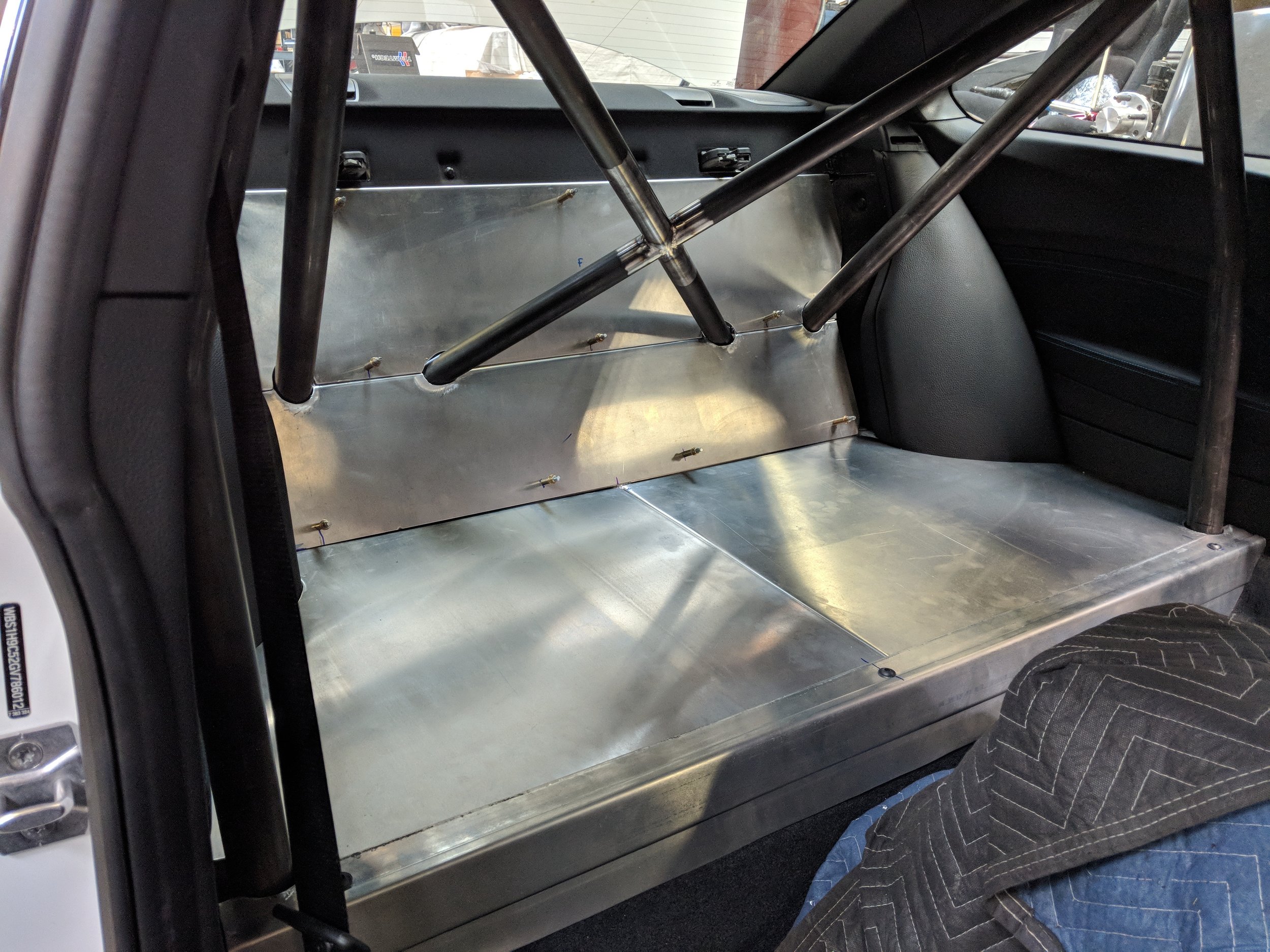
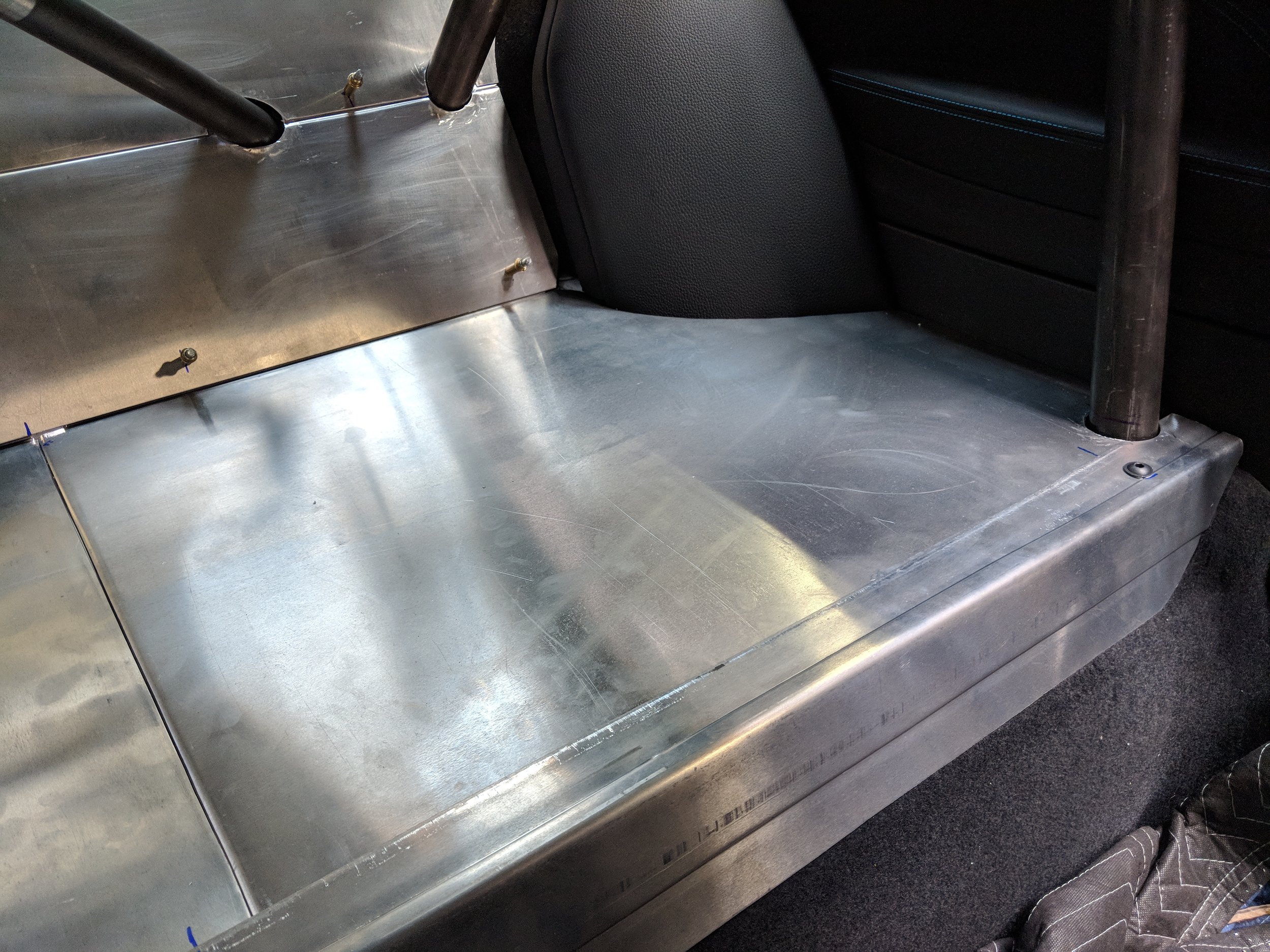
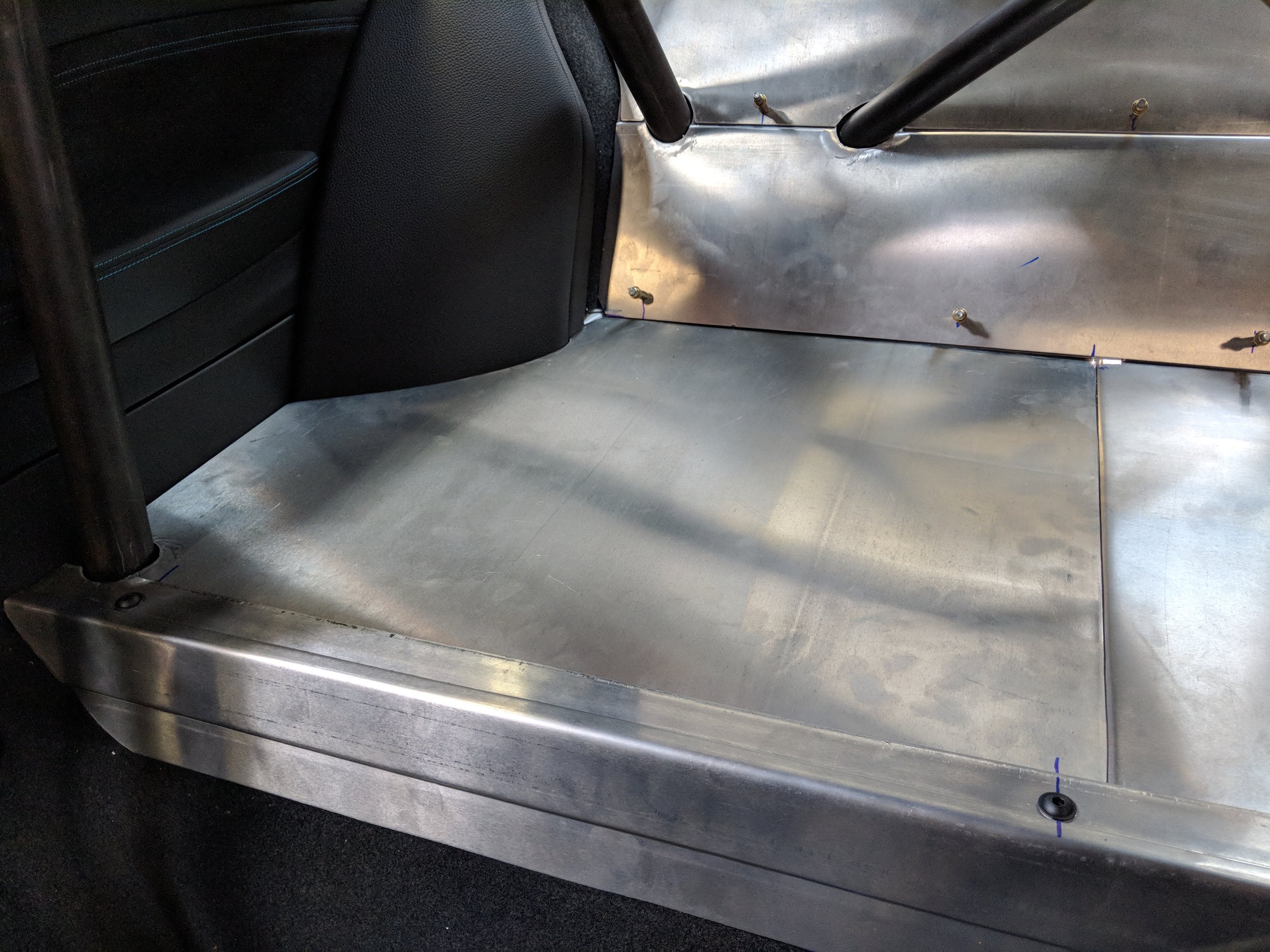



The end result was a stronger cage that stayed with the theme of a no compromise GTS. Next stop....back to Edge Motorworks to have the brakes and suspension finished before some much needed test and tuning. Then it goes to the uphostery shop to have the racing seats and rear seat delete panels dressed up before going back to Edge for some carbon fiber aero parts installed. Stay tuned to watch my madness unfold.
BMW M2 Build - Wheels and Tires
One of the first things I do with any build is get new wheels and tires with the goal of getting more width and thus more grip. I also want a set of tires that are designed for the track versus the street for better turn-ins and braking. I once again used Apex wheels as I like that they are designed for BMWs and thus don't need spacers. They also fit many big brake kits, are lighter than OEM wheels, and are reasonably priced. They have a BBS sort of look but without the BBS premium price. Here are some pictures of the before and after, but don't mind the large gap between the tire and fender as we have not dropped the car yet.





I went with 18x9.5 ET28 FL-5 wheels in satin black. I wanted to go as wide as possible without rolling the fenders or having to buy or fabricate a wide body kit. The stock wheels have a staggered setup, but after consulting with Edge Motorworks and Apex we decided to go with a square setup. This will give the front a lot more width while also giving the rear some more width. This also has the added advantage of allowing some tire swapping to prolong the life of the tires. I also went with an Apex stud kit to make wheel changes a snap. While many people prefer the bullet nose style of stud kits (mostly I think because they look good and resemble a professional race car) I always go with the hex head style. The reason being is that the hex head is far easier to install and maintain proper torque settings. The exact kit I used was the black 14mm by 75mm hex head which can be found here.
For tires I went with Nitto NT01 275/35ZR18 95W. These are DOT compliant competition tires and thus are much more suitable for the track than the various OEM tire options. The stock tires are 245 in the front and 265 in the rear so with a 275 square setup I am adding considerable width and grip especially to the front where the car needs it the most (in my opinion). I am not planning on adding any more power to the car outside of what I have already done with a Dinan tune, so I feel the 275 should be fine for the rear. Ideally I would have 285 in the front and 305 in the rear but we plan on adding a big brake kit by Sparta Evolution and KW Clubsport coilovers and we were not sure if 285/305 would fit properly without rolling the fenders. Once we have the brakes and suspension done (in April) we can make the necessary measurements to see if 285/305 would fit and if they do we might swap over to that.
I have taken the car out on the track with these wheels and tires and my first impression is positive. I certainly have better turn-in, braking, and grip overall even with a rather stock alignment. Once I get the brakes and suspension on I will have a better idea on how the whole package will perform, but so far I am pleased. Keep in mind you either need to add TPMS sensors to your track wheels and then constantly reset the system when you lower tire pressure or change tires.....or better yet code out TPMS from your car as I mentioned in my "Coding" blog post.
Next up....brakes and suspension come mid-April.
BMW M2 Build - Coding
Before I start talking about what coding I did to the 2016 BMW M2, let me first say coding a modern car is a source of massive debate. I do not take coding lightly as there is potential for serious issues. With that said, I personally feel modern cars have (in some ways) become too smart. They restrict us beyond what is needed and in a quest to be smarter they begin to take away some of the primary characteristics of the car's spirit and purpose. This is why I decided to code my M2 as part of this build, but I certainly do not suggest someone else coding their car.....that is up to you and you alone.
Coding 101
Ok, with that out of the way let's talk about what coding is, why I coded, what I coded, and who I used. For those that don't know much about coding modern cars the concept is rather simple. The master computer in the car is hooked up to many sensors and modules. The computer is run by code. The sensors and modules feed information into the computer and the computer code decides what the car can and can not do. Manufactures of cars don't want to write special code for each model and version of car they make. So they write as few different versions of their code as they can and then simply have options in the code to handle the different models and versions. This is cost effective for the car manufacture but it also opens the door for hackers to manipulate the code to get your car to do things the manufacture didn't intent when you bought the car.
An example would be BMW's brake force lighting. Some BMWs will flash the brake lights under heavy braking while other BMWs will simply make the brake lights brighter. That decision is run by a code variable. If you can find that variable in the code you can "enable" brake force lighting or "disable" it. In the case of the M2 there is no setting to change this for the typical owner. But if you change the code slightly all of a sudden your M2 can have brake force lighting which was reserved for the M4 and M3 in certain countries.
M2 Observations
As a street car there is no strong reason to code outside of wanting to "trick your car out". But I quickly learned that if you are planning on taking a modern car to the track coding might be safer and needed. The first few times I took my stock M2 on the track I noticed a few things that were beyond annoyances and bordered on major concerns. The first was the nanny systems. While BMW gives you some control over the nanny systems by allowing you to select Comfort, Sport, or Sport+ all of those settings are still too aggressive for track driving. For the street they are likely the way to go, but for the track they kill the power upon the exit of the turns and generally hold you back from feeling the car and having complete control over the car. You can turn off the system almost entirely but for some people this is too extreme. I have found Porsche gives the driver far more options on fine tuning the nanny systems. But rather than simply living with it I can do something about it with the code.
The second thing I found when tracking my M2 is that the tire pressure monitoring system (TPMS) causes all sorts of issues on the track. Again, this is a great system for the street but when on the track a few things happen. If you are like 99.99% of all track drivers you play with your tire pressure before and after each track session to optimize the pressure and grip as the tires go from cold to hot. If you fall into this category then the TPMS will drive you nuts. If you drop the pressure in the paddock so that the pressure can increase 8-10 lbs as they heat up you are likely to trigger TPMS as you start the session. Not only will the chime and lights and display message distract you, but when TPMS is triggered it can automatically change your nanny system setting from off or Sport+ or Sport and drop you back down to Comfort. This not only kills the car's performance but it is highly distracting and frankly can cause issues for you and the other drivers when on track at speed doing hard braking. Another consideration is that if you have multiple sets of tires some might have TPMS sensors and some might not. This means when you switch to a set that does not have the sensor you will immediately trigger the TPMS. But now you are stuck as you can't turn off the TPMS. And even if all your tire sets have TPMS sensors, each time you change tires you will need to reset the TPMS in your car. All of this adds up to a pain in the ass on track days. But thankfully there is a code for that.
If you were to upgrade the seats of an M2 to put in proper racing seats and racing harnesses (say 4, 5, or 6 point) you will trigger the seat belt reminder chime and light. This again is very distracting to the driver to have a chime and light and display message while you are trying to drive at speed on the track. It is also a bit counterintuitive to have a warning light when you are in a certified racing seat that is far safer than the stock seat, with a 6 point harness attached to a half cage, and wearing a HANS device and helmet. So don't plug your ears and put black tape over the dash light...code it out.
Back to my example with brake force lighting....wouldn't that be a nice safety feature when on the track versus your standard brake lights? For advanced drivers who are pushing the car by doing late braking into turns which usually means getting close to other cars on the track it seems obvious that enhanced braking features would be beneficial. Many purpose built race cars and race organizations require enhanced brake lighting. Whether it is for hard braking, coasting, or for the rain many motorsport organizations and teams have decided to shift to enhanced brake lights to catch the attention of other drivers. So why settle for normal brake lighting when on the track in your M2?
All of these were performance or safety specific issues I ran into. But I also found other changes I wanted that fell more in the bucket of convenience. Like when the side mirrors fold and unfold, when the radio turns off, and the constant legal disclaimer reminders that seem to turn driving into an "accept these terms in order to have fun" experience. Also the M2 has a nice feature in the exhaust system where there is a value that the ECU controls to either open up the exhaust or restrict the exhaust. This doesn't impact the performance in a material way, but it does change the sound. I wanted to manually control that valve without having to buy BMW's M Performance exhaust as I prefer the sound of Dinan's exhaust.
My Code Changes
There are dozens of code changes you can make and most fall into the convenience bucket. If you want to see a full list of options check out the vendor's sites mentioned below. I decided to limit my changes to the following:
enable Euro MDM (this is the nanny setting used in Europe versus the US which tends to be a bit less restrictive)
enable brake force lighting (flash the brake lights under heavy braking)
disable TPMS (tire pressure monitor system)
disable driver and passenger seat belt chimes, lights, and reminders
driver controlled exhaust valve (open, closed, let the ECU decide)
disable legal disclaimers
fold mirrors when locking
unfold mirrors when unlocking
turn off radio and nav after turning off car and opening door (BMW's standard setting is that you have to hit the power button twice to turn off the radio/nav otherwise it remains on for some time)
Who I Used
There are lots of companies and services that do this kind of work. After some research I decided to go with BimmerCode because I liked the idea that I could make the modifications myself through an OBD II kit and my iPhone app. They don't support all the changes I wanted but they did support most plus I can use the kit and app on other cars as needed. I also used CodeMyCar which is more expensive and requires them to remotely connect into your car through your laptop and a cable so they can do the coding work for you. The advantage is that they can code more things and their service allows for unlimited code changes over time. CodeMyCar also seems to be able to go beyond simple code changes and actually install tunes to some degree. I used CodeMyCar for the Euro MDM code and to disable the TPMS as those codes were not supported by BimmerCode. I also used Macht Schnell which handles codes a bit differently. They sell modules (a small electronic control box) you install into the car that then manipulates how the car operates in certain ways. What's nice about this method is that they can use existing buttons and switches in your car to activate the code change. For instance their TPMS code change is triggered by lifting up on the driver's side window switch for 5+ seconds.
Findings
So far I am very satisfied with my code changes and I have not had any issues with warning lights or odd behavior. I will do more track testing later this month at Sonoma with NASA so if anything comes up I will update this posting. One question that has come up is what this will do to your warranty or when you go into the dealer. Based on my research the code changes are reversible, they are largely undetected unless someone was to audit your car's computer code which is extremely rare, and frankly since I am tracking the car and doing extensive mods my warranty is shot anyway :) The way I look at it is that in older cars we used jumpers and other tricks to accomplish the same thing as recoding. So as long as you do your research, pick the right solutions, don't do too much, and understand the risks.....code away.
BMW M2 Build - repeating the past
As some of you know I started my performance driving in a 1995 BMW M3 E36. She started her life as a street car but once I got my hands on her I started down that dark path of converting her from a daily driver to a track car. It began with suspension, Dinan parts, and a wheel and tire set. But over the course of three years the modifications continued until the point where there was a custom half cage, racing seats, aero, data and video system, and countless accessories. As far as dual purpose cars go I felt she was perfect.
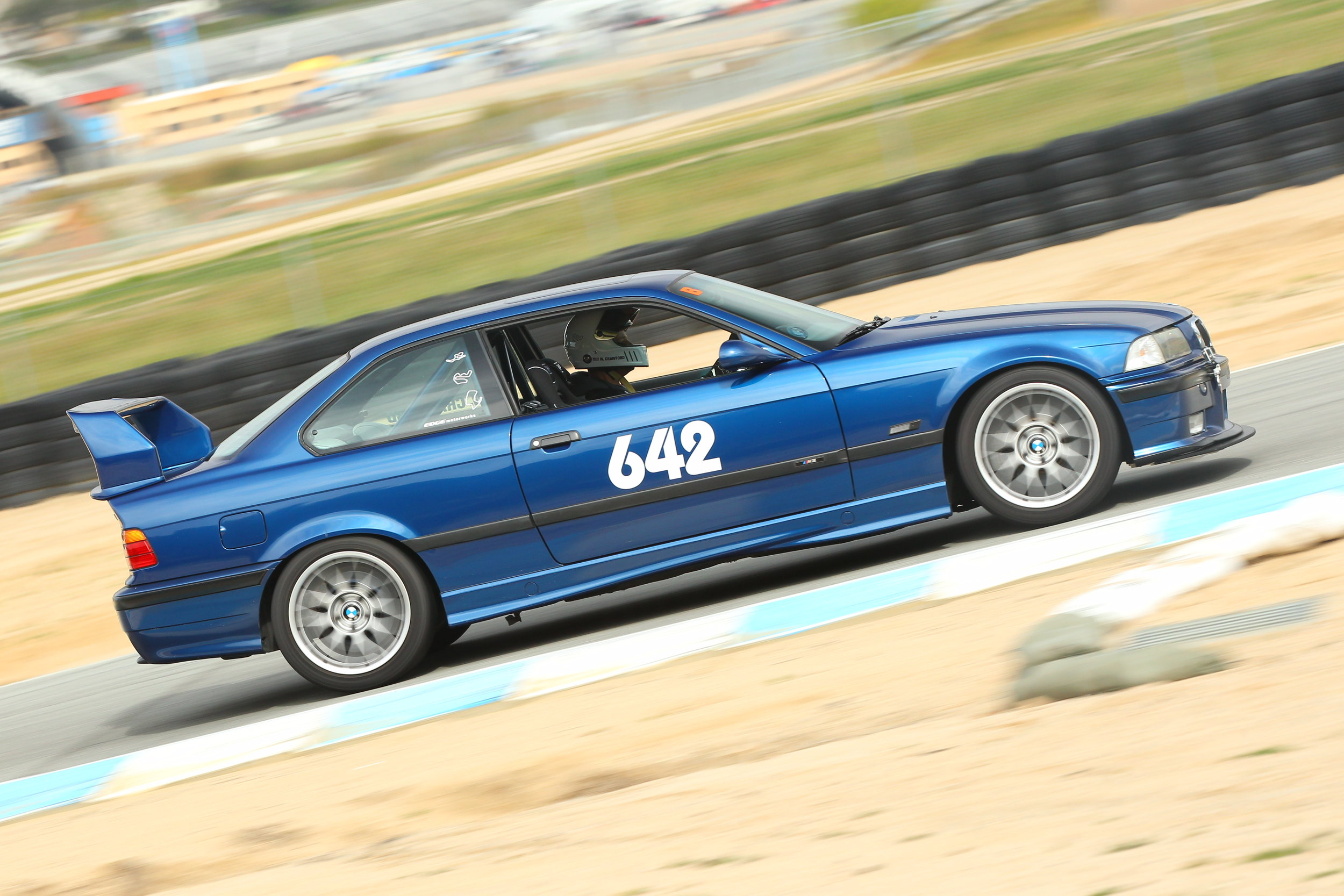
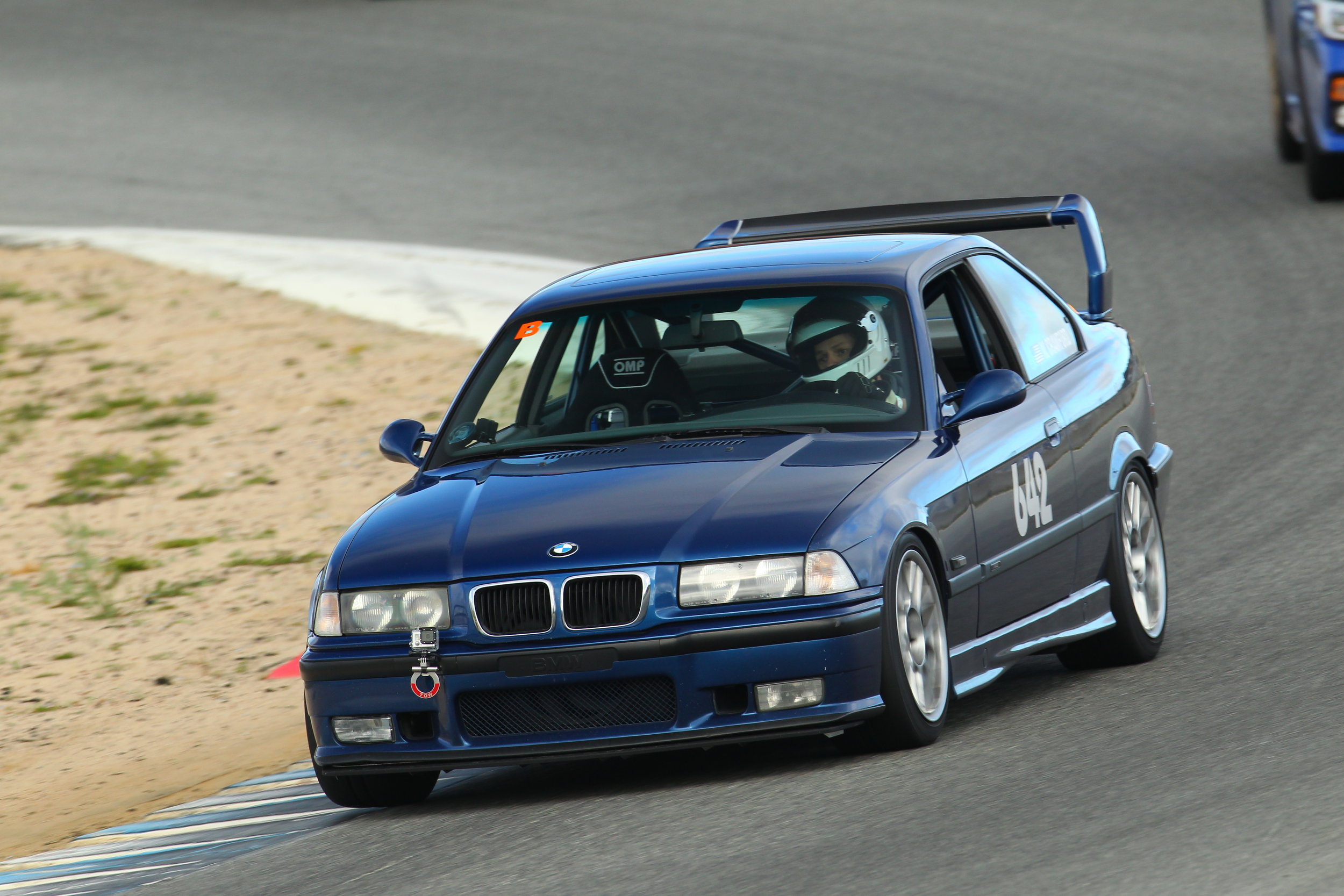
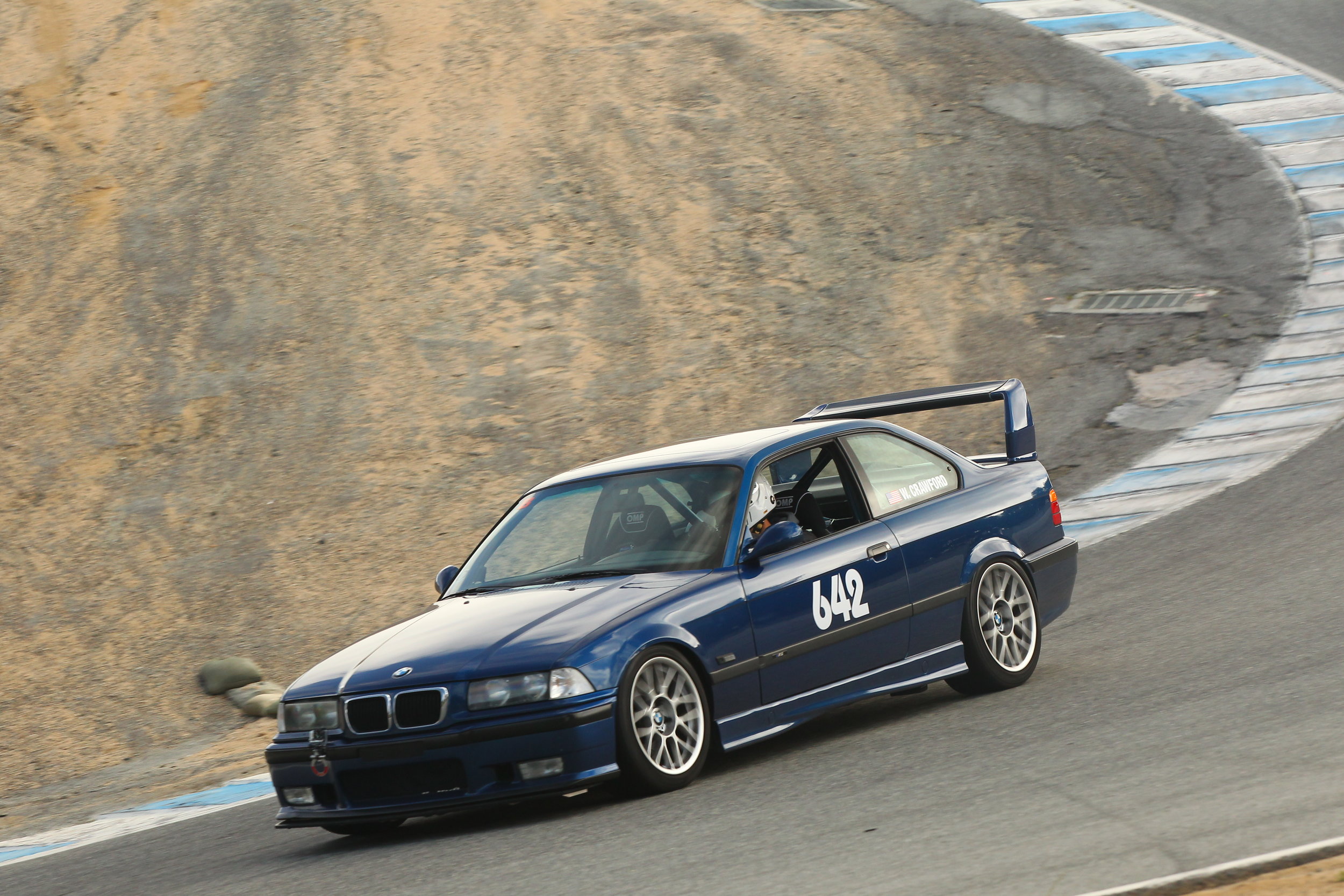
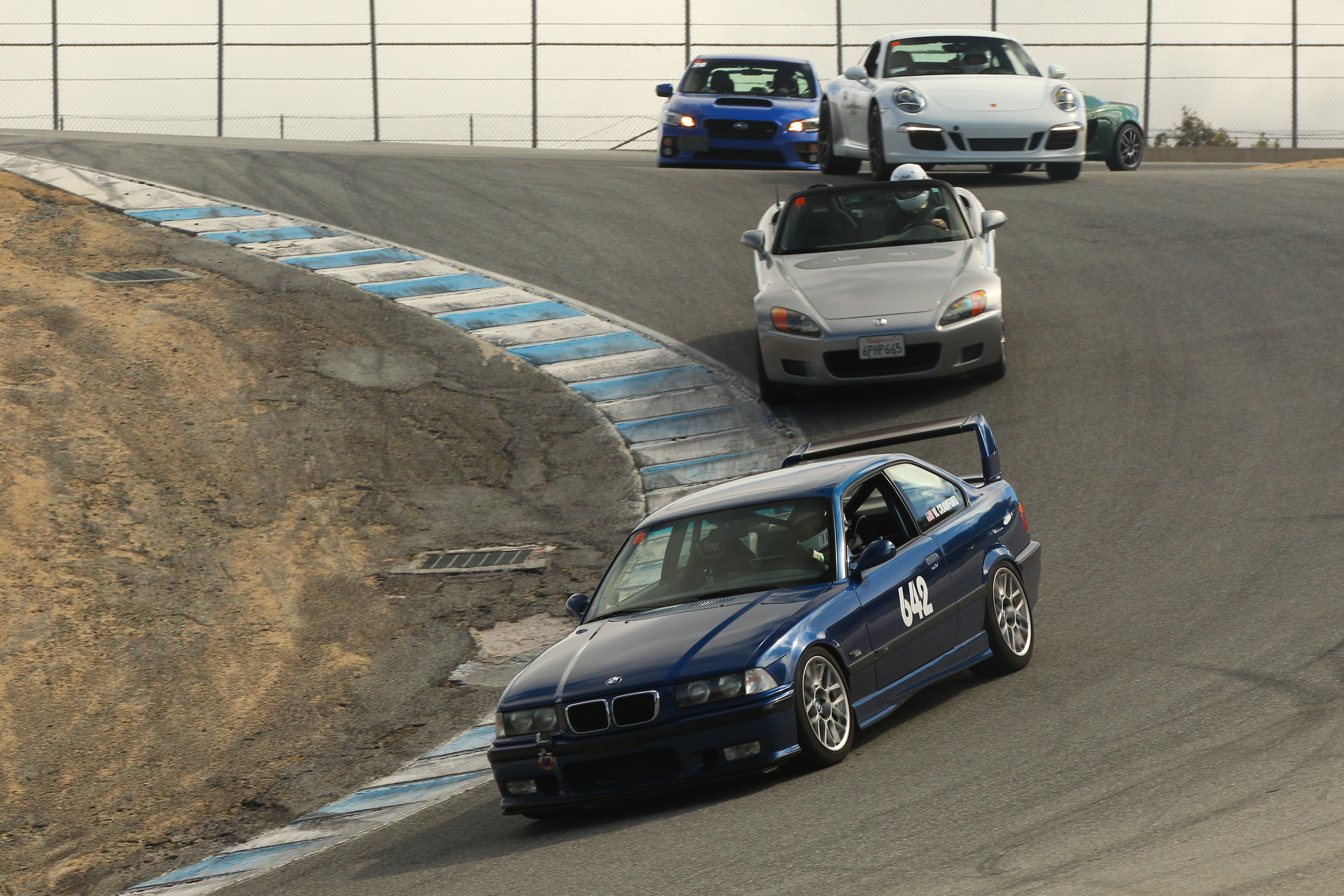

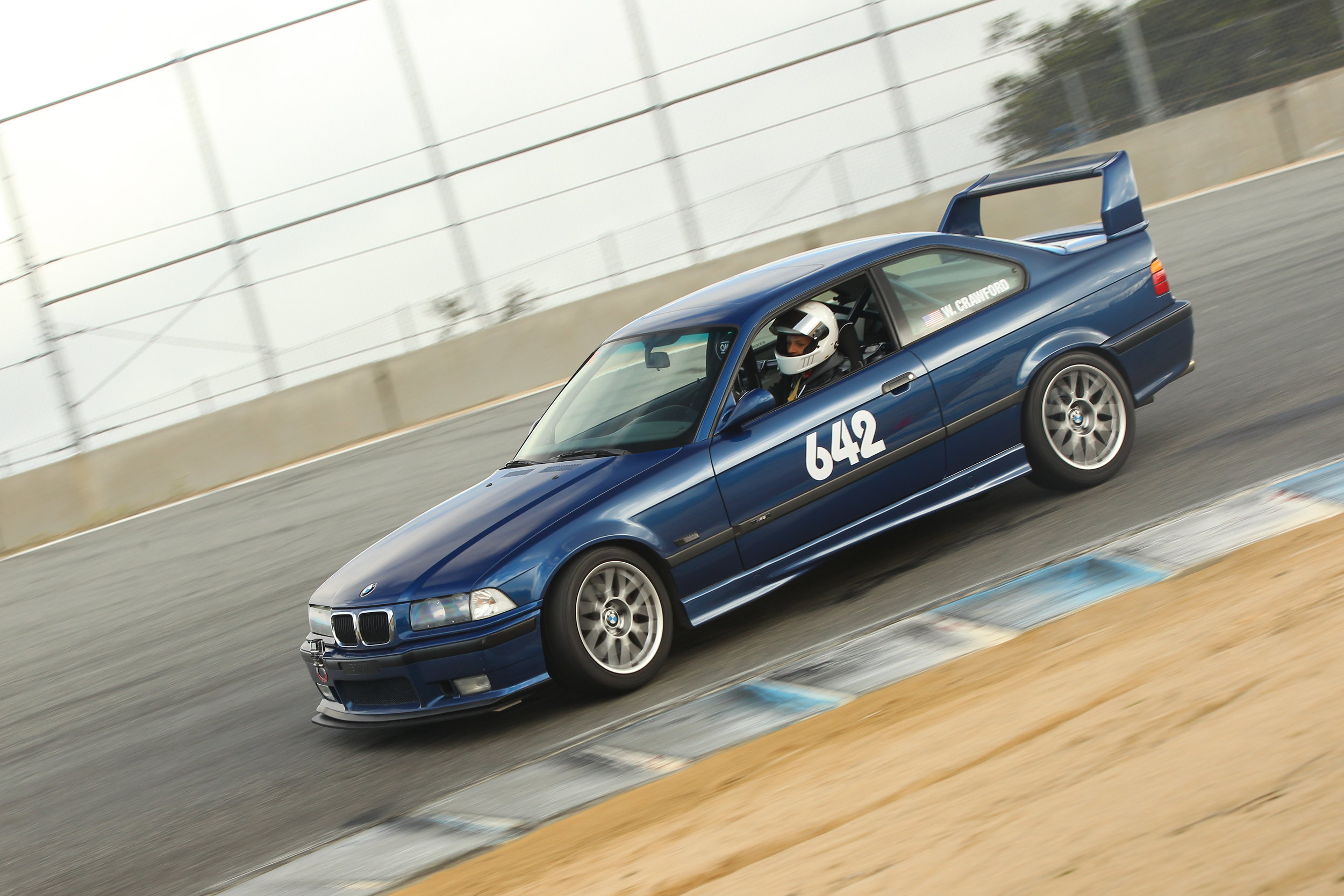

Unfortunately her life was cut a bit short when she went into the wall at Sonoma. But her spirt continues as her parts helped other cars transform from commuters to track demons. After her passing, I shifted my driving focus from GT cars to prototypes and bought a 2009 Radical ProSport 6. While I loved my 95 M3 dual purpose car, there were certain sacrifices I had to make with her and in the end she only had modest HP. So needless to say I welcomed the shift to an open cockpit, high revving, purpose built race car....for a while. Eventually I missed the simplicity of a GT. Something that could be streetable (barely) but also a good track car. I also missed the countless hours you could spend thinking about, and buying, aftermarket parts to make the car your own unique creation. And while all high performance cars require love and attention, a GT tends to be less demanding on track days compared to a prototype.
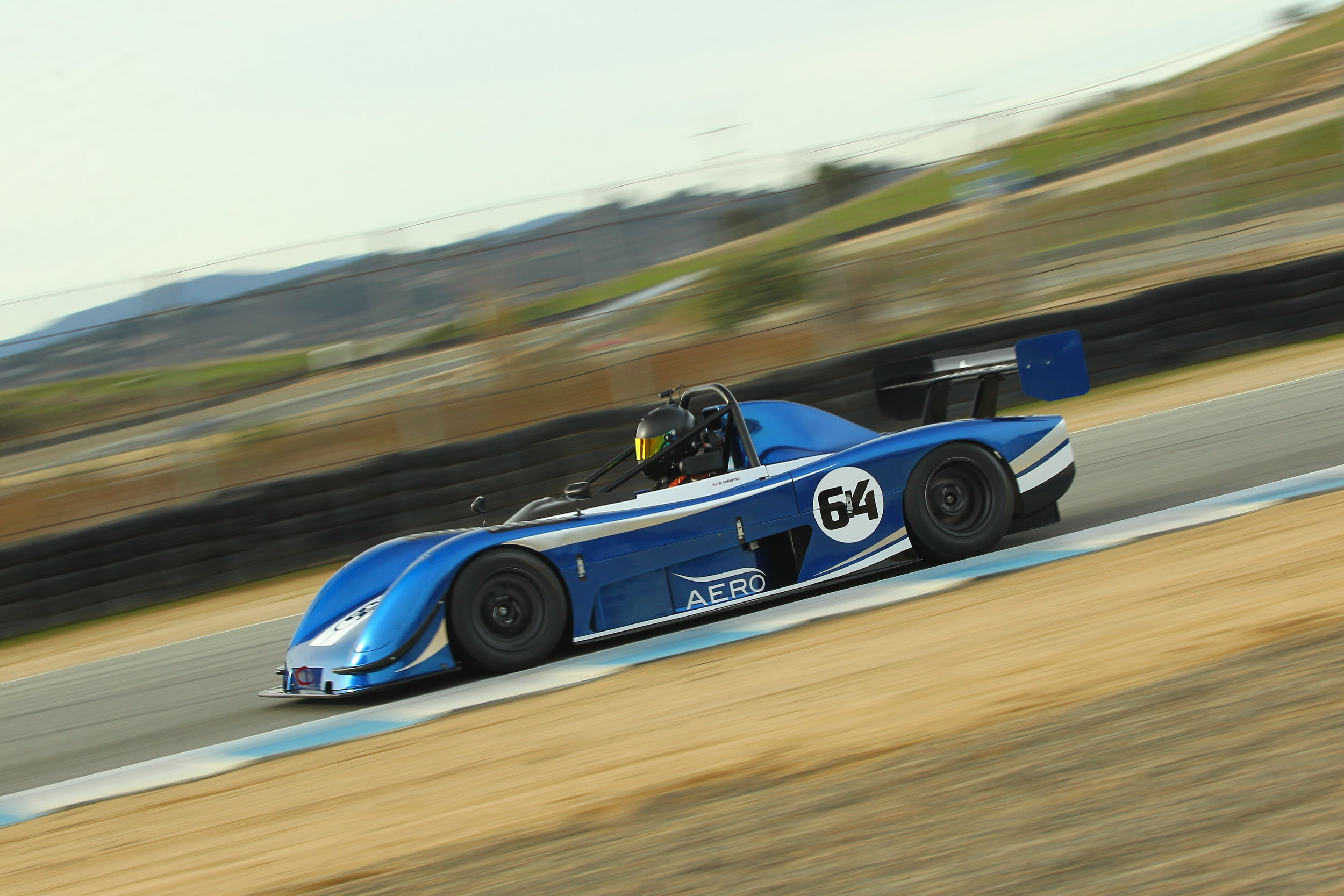
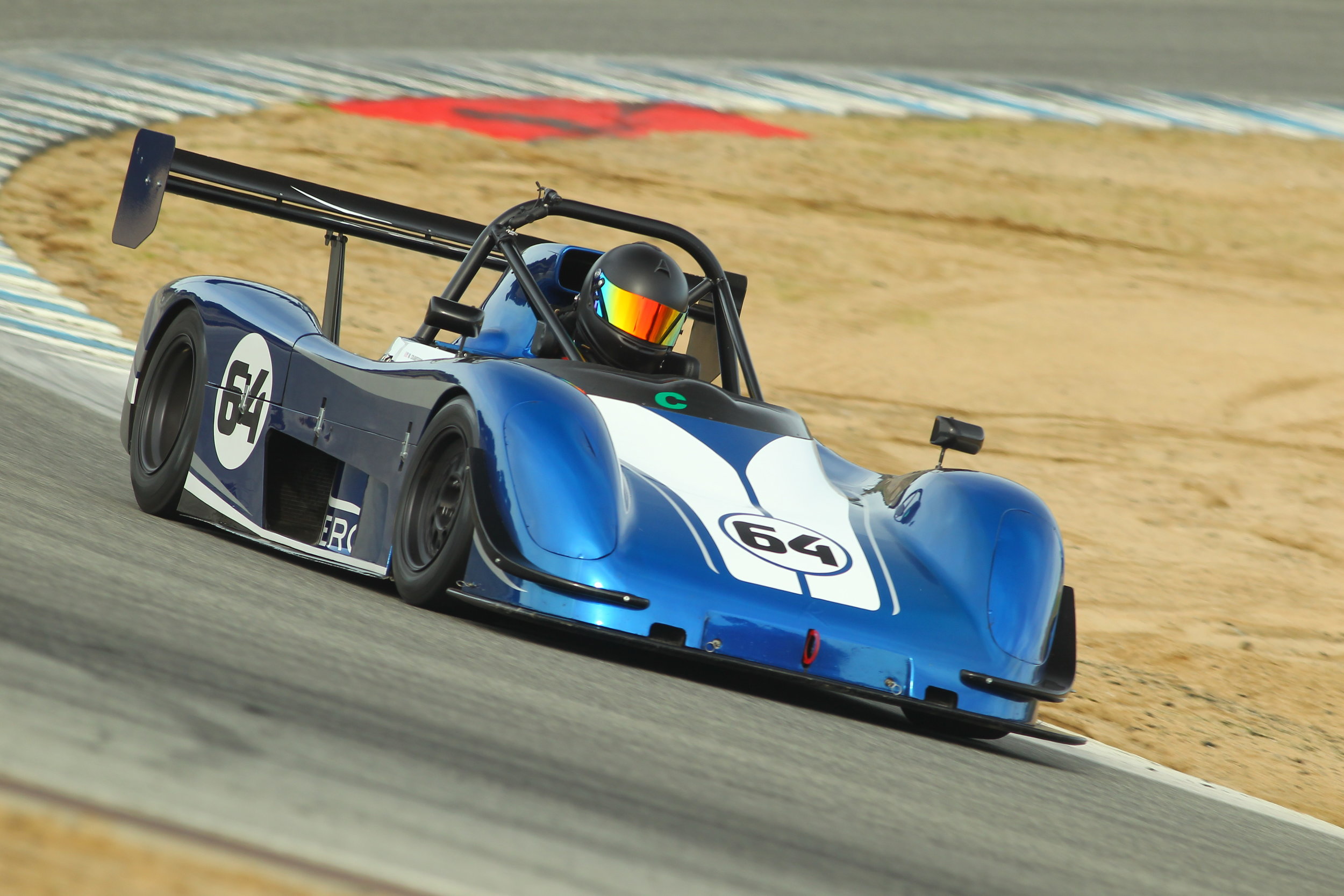
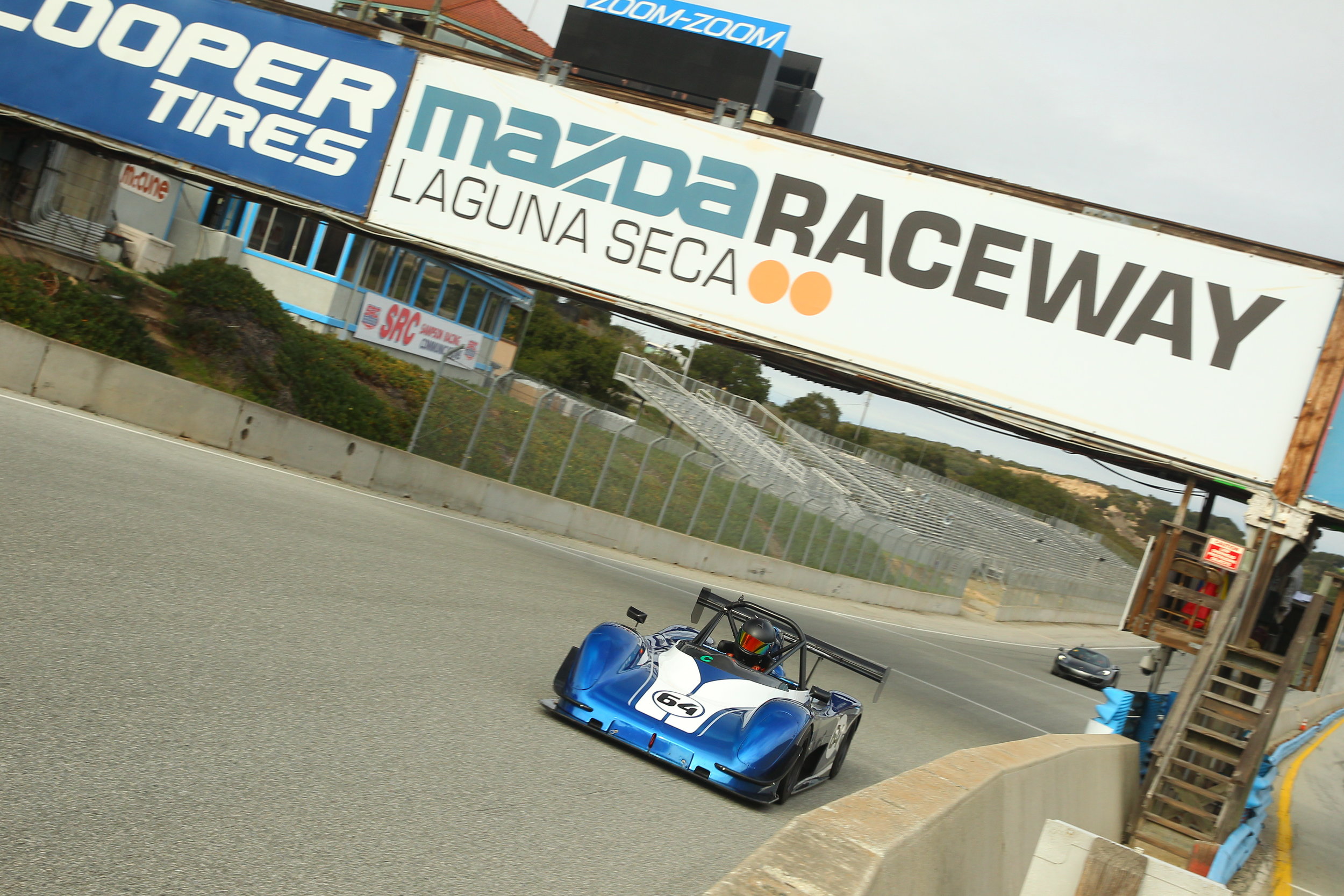
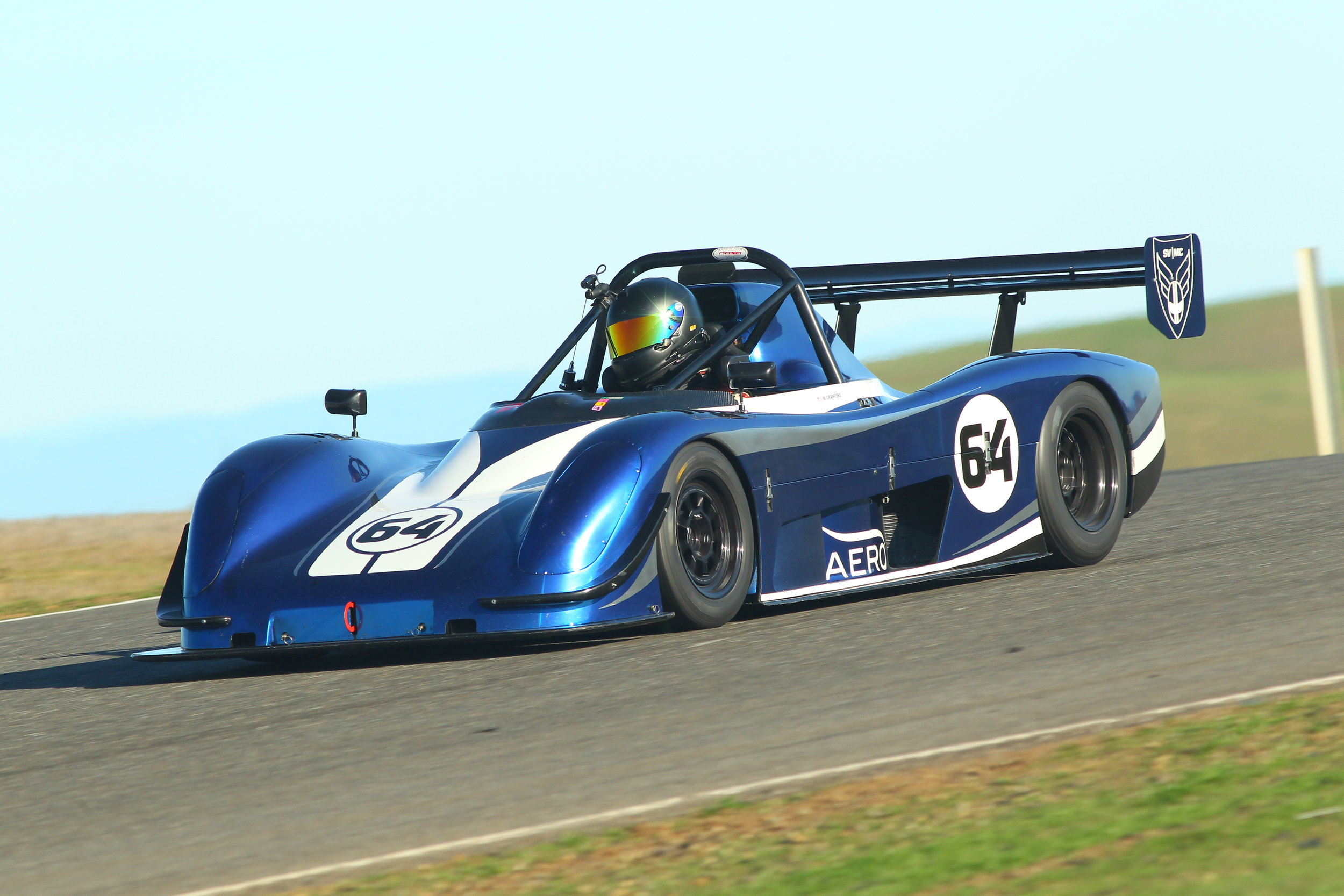
So when my personal life required me to rethink my garage lineup, my mind quickly reminisced to the fond days of driving the 95 M3. Yet one thing had already changed in my garage....I now had an M2 to contemplate modifying. I purchased the M2 from Enthusiast Auto Group, who I have bought a few cars from as they have a unique ability to get their hands on hard to find BMW M cars (vintage and new). When dealers had one M2 on the lot, EAG had a dozen. EAG was able to source a low milage (like 12 miles) Alpine White M2 and get it to me within a couple of weeks. So after hours of thinking about which direction to take, I finally decided to take my 2016 M2 and turn it into my vision of what BMW would have created if they had dared to make an M2 GTS. But rather than simply copying the M4 GTS, I wanted something that was not restricted to the BMW parts bin. The purpose of this build was to have a streetable car (even if just barely) that would be a track animal for HPDE days as well as something that could reasonably compete in Time Trial events with NASA. The hard part would be to do all that while trying to keep the BMW "factory look". For me this would be the recreation of my 95 M3, but with modern advancements.
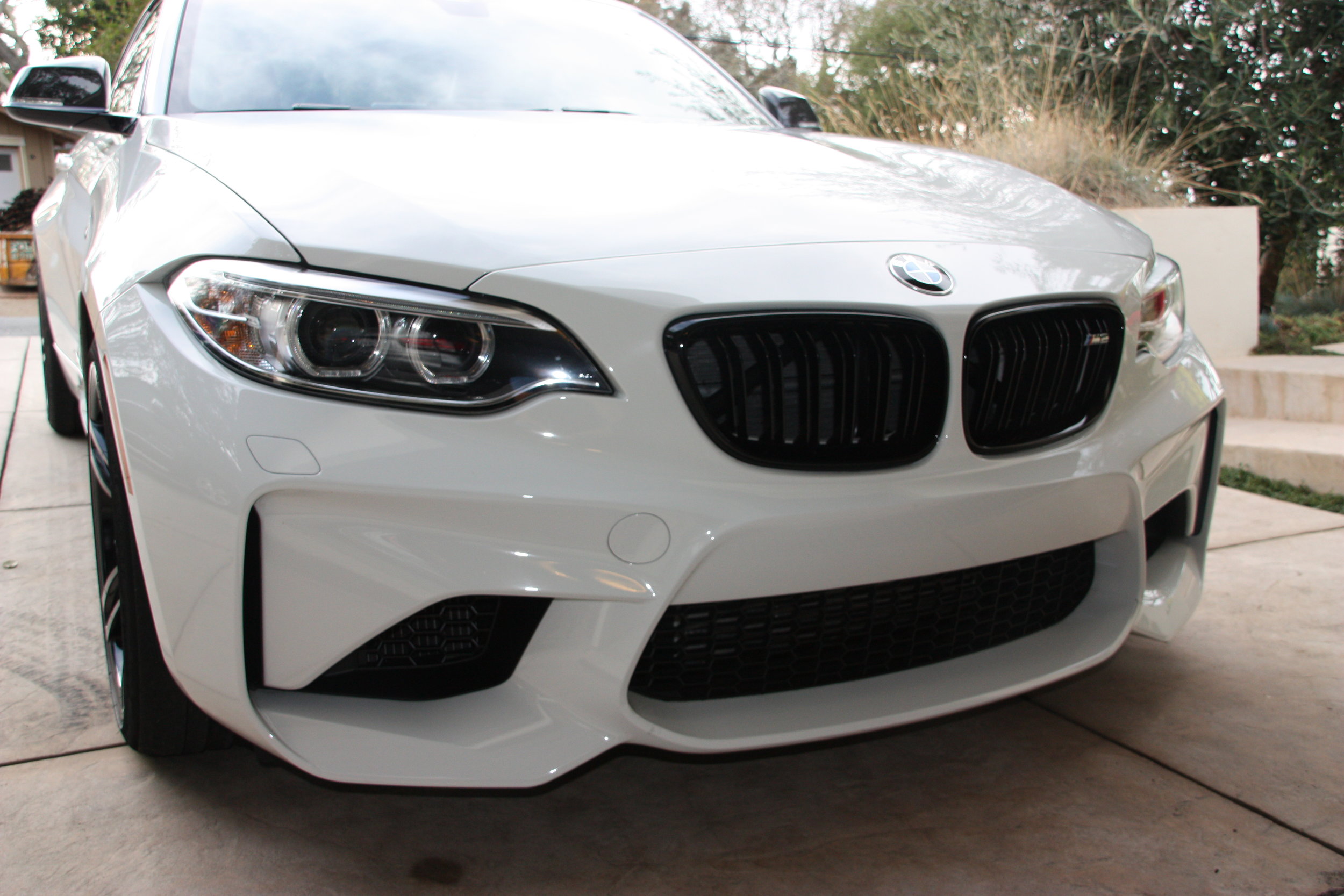
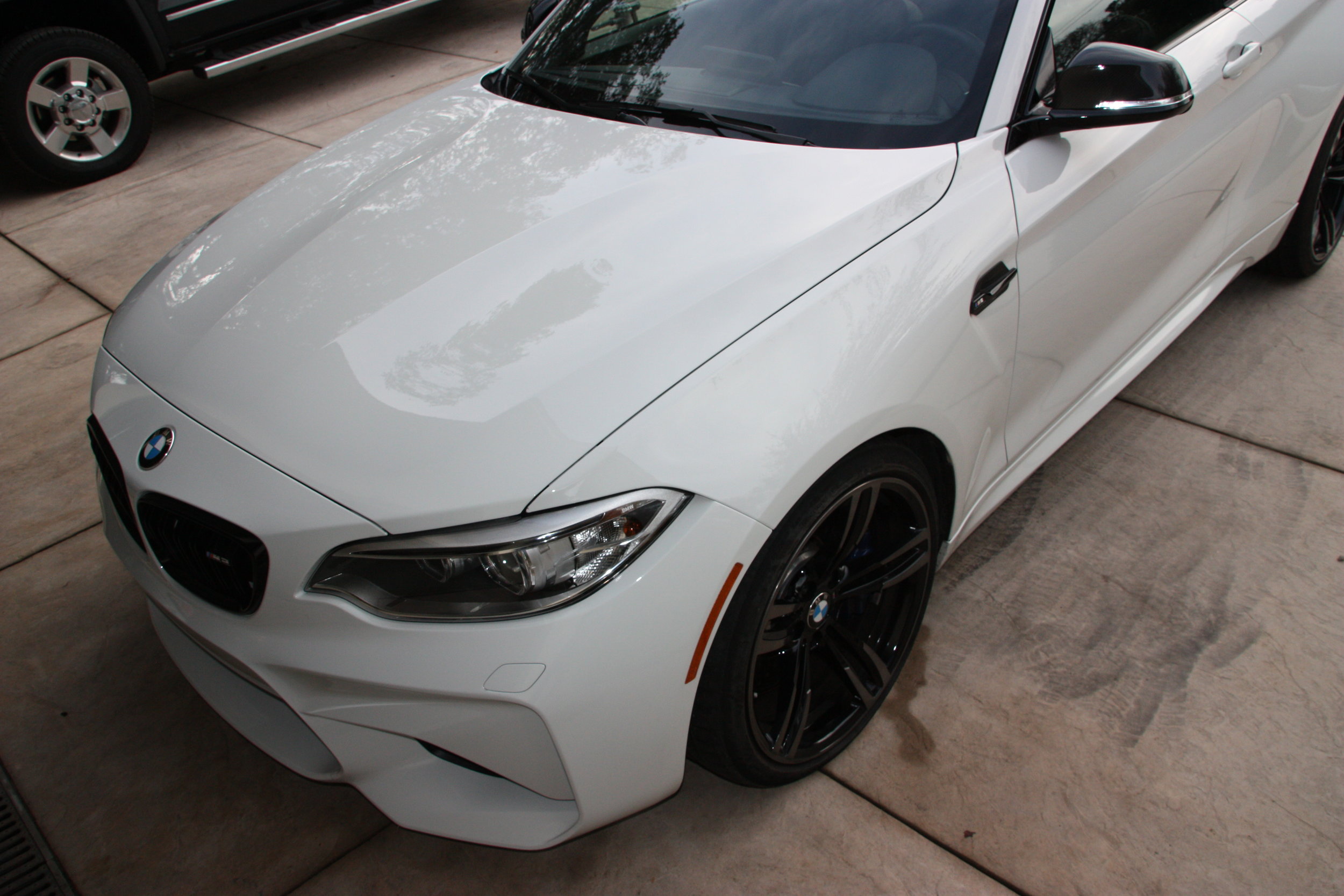
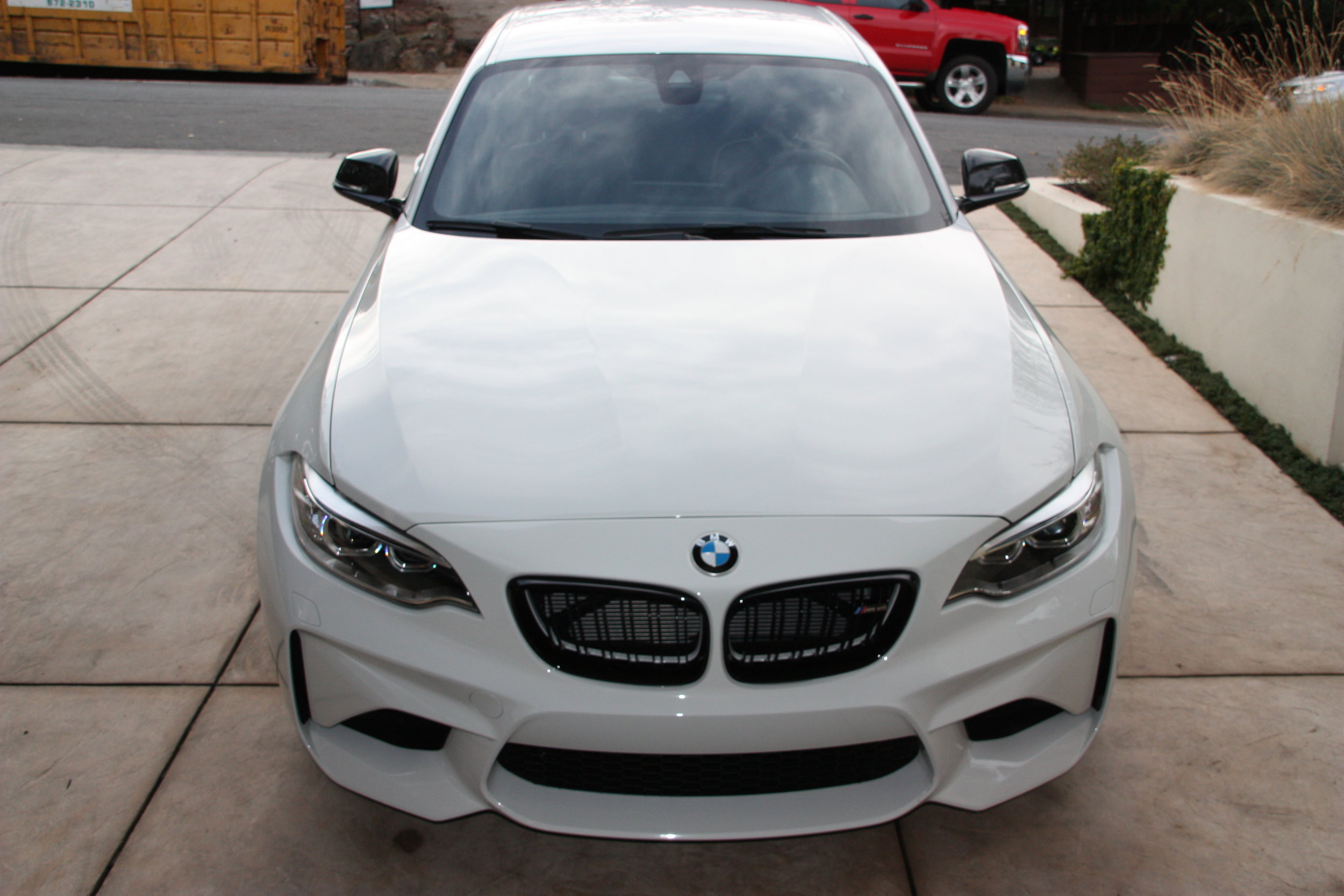

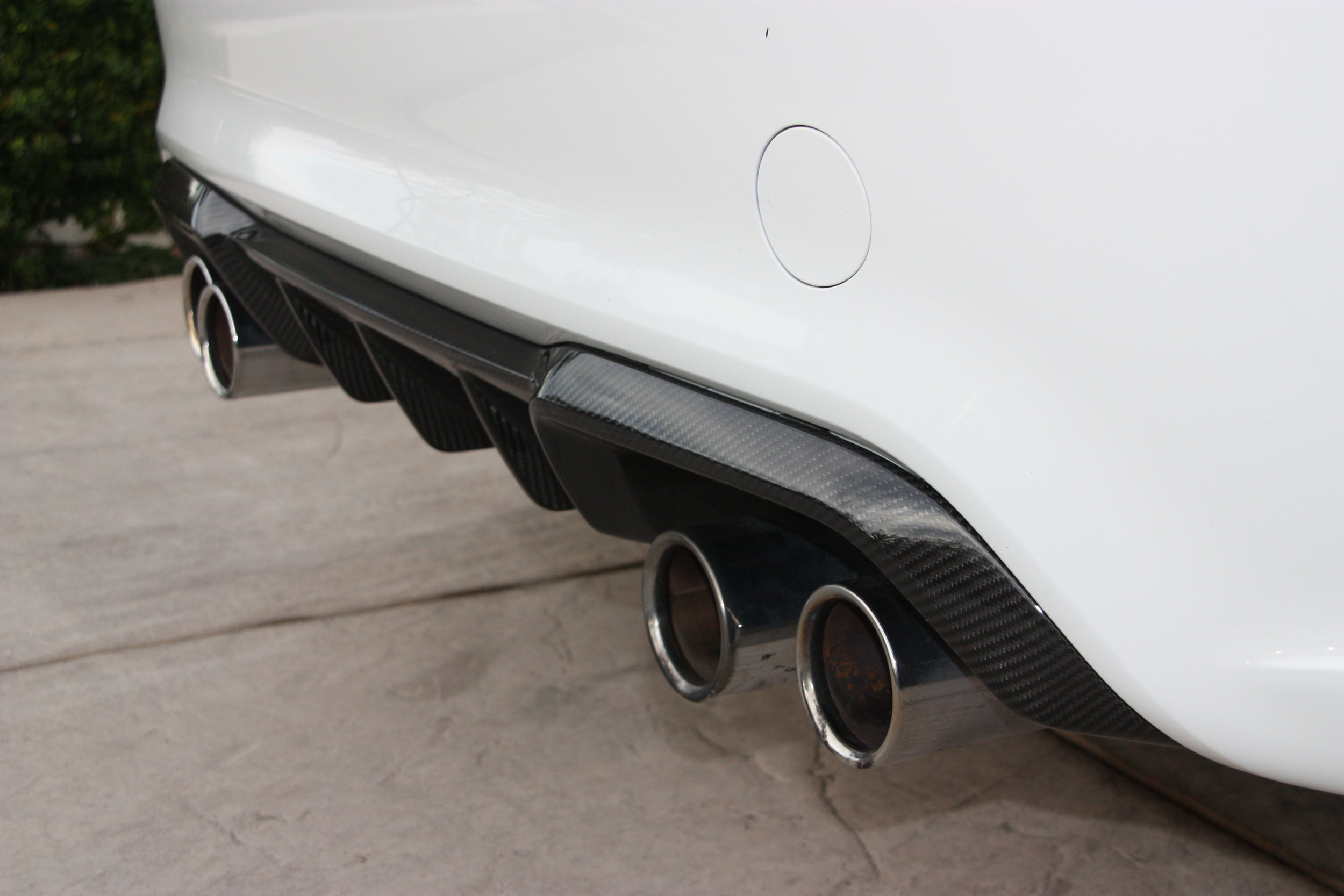
In my opinion, The M2 is a perfect starting point for a project like this. Arguably, the M2 is the rebirth of the E36 and E46 M3 era. Small, balanced, high revving 6 cylinders, and a focus on the driver above all else. I went with white to pay tribute to the classic BMW Motorsport cars of long ago. I added a few things when I first got the car (well maybe more than a few things) and had EAG install most of them before I took delivery. I will admit I went with the DCT option versus the manual. I won't bother going into why, as that will just lead to a religious debate, but needless to say I had my reasons. Here is the build's starting point:
- BMW M Performance grill
- BMW M Performance gills
- BMW M Performance carbon fiber mirrors
- BMW M Performance carbon fiber spoiler
- BMW M Performance carbon fiber rear diffuser
- BMW M Performance carbon fiber steering wheel trim
- BMW M Performance pedals
- Dinan carbon fiber air intake
- Dinan tune (stage 1)
- Dinan resonator delete
- Mach Schelle exhaust control unit
- Rennline two hook (front and rear)
- Cool Carbon ST Plus brake pads
- Bimmercode custom ECU coding
I am working with Edge Motorworks in Mountain View, CA to help me piece together the rest of the project. They helped me with my 95 M3 and have extensive experience in racing and helping customers create their BMW dream car. Along with Edge I am working with select companies that have products or services that match the kind of build I am doing.....which I summarize as "high performance, purpose built, with excellent fit and finish". Over the course of the build I will post updates and photos and explain why I went the direction I did. If you are in the Bay Area and go to the Portola Valley cars and coffee event each month, or frequent the local tracks, you are sure to find me and I would be happy to discuss the build or the Silicon Valley Motor Club. Check out the club calendar to track me down or shoot me an email. And with that, its time to open the pocket book and begin the build.





